Fiber optic report management platform
About this project
This platform revolutionizes the way fiber optic companies document their field work. Gone are the days of spending hours compiling photos, manually creating reports, and managing scattered files. The tool centralizes the entire process, from taking photos in the field to automatically generating professional reports. Using the PWA mobile app, technicians capture photos of telecom rooms (environment, open room, A/B/C/D masks), add annotations directly to an interactive grid to model duct occupancy, and validate their work in just a few clicks. The data is synchronized in real time, allowing office teams to track progress and generate reports instantly. The main advantage is the automatic generation of FOAs and DFTs. The platform intelligently compiles annotated photos, room information (INSEE code, GPS coordinates, type), and models to create professional Excel and SHP documents. The innovative optimization algorithm automatically calculates the optimal order of visits between rooms, significantly reducing travel time in the field. The integrated credit system allows for transparent billing based on usage, with each report generated consuming one credit. Finalized reports are automatically available in the customer area. This saves my customers valuable time, reducing the administrative work required to document a complete intervention from several hours to just a few minutes.
Key Features
- Structured Photo Capture: PWA mobile application enabling organized photo capture: environment, open chamber, and the 4 masks (A, B, C, D). Support for a mode of adaptability depending on the network.
- Interactive Mask Modeling: Intuitive grid interface for annotating conduit occupancy: free (white), reserved (blue), occupied (beige), faulty (red). Add diameters (Ø45, Ø60, Ø80, Ø100/150) directly to the grid.
- Automatic Generation of FOA and C3A: Instant creation of FOA (Cabinet Opening Reports) and C3A reports with automatic compilation of photos, annotations, and technical data. Export to Excel and professional PDF.
- Route Optimization Algorithm: Intelligent calculation of the optimal order of passage between telecom chambers. Significant reduction in travel time in the field thanks to connection graph analysis.
- Credit System and Billing: Transparent consumption management with a prepaid credit system. Each report generated consumes one credit. Real-time monitoring of balance and transaction history.
- Chamber Database: Bulk import of rooms via ZIP files. Storage of GPS coordinates, INSEE codes, room types. Map visualization and advanced search.
- Automatic Email Delivery: Automatic distribution of finalized reports to configured recipients. Real-time notifications and secure archiving of all generated documents.
- Professional Dashboard: Project overview, tracking of created FOAs, order management. Modern interface with advanced filters and data export.
- Multi-User Management: Role-based system for field and office teams. Secure login via email with verification code. Full traceability of actions.
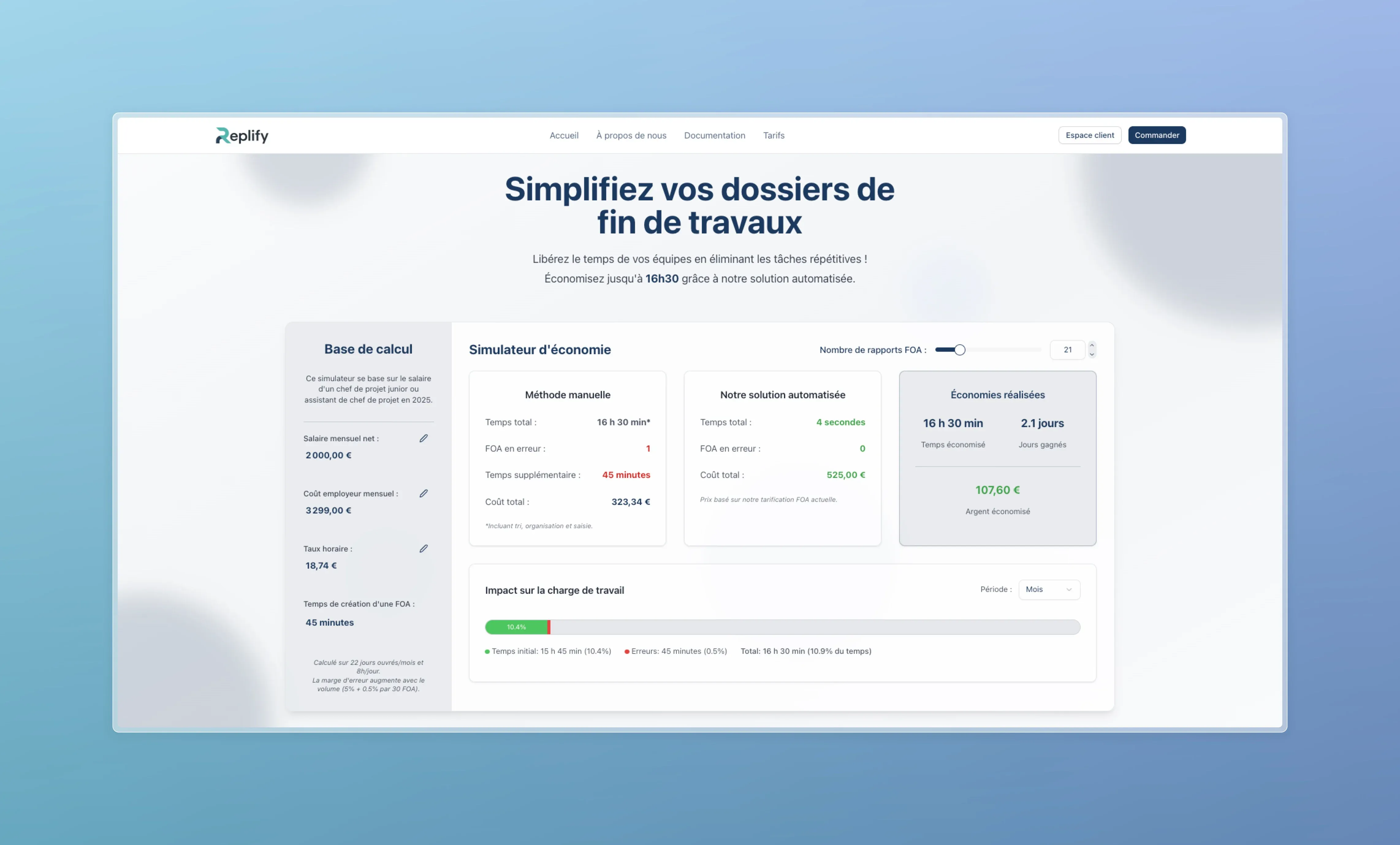
Economy simulator
Calculator showing time and cost savings with automated solution vs manual method for work completion files
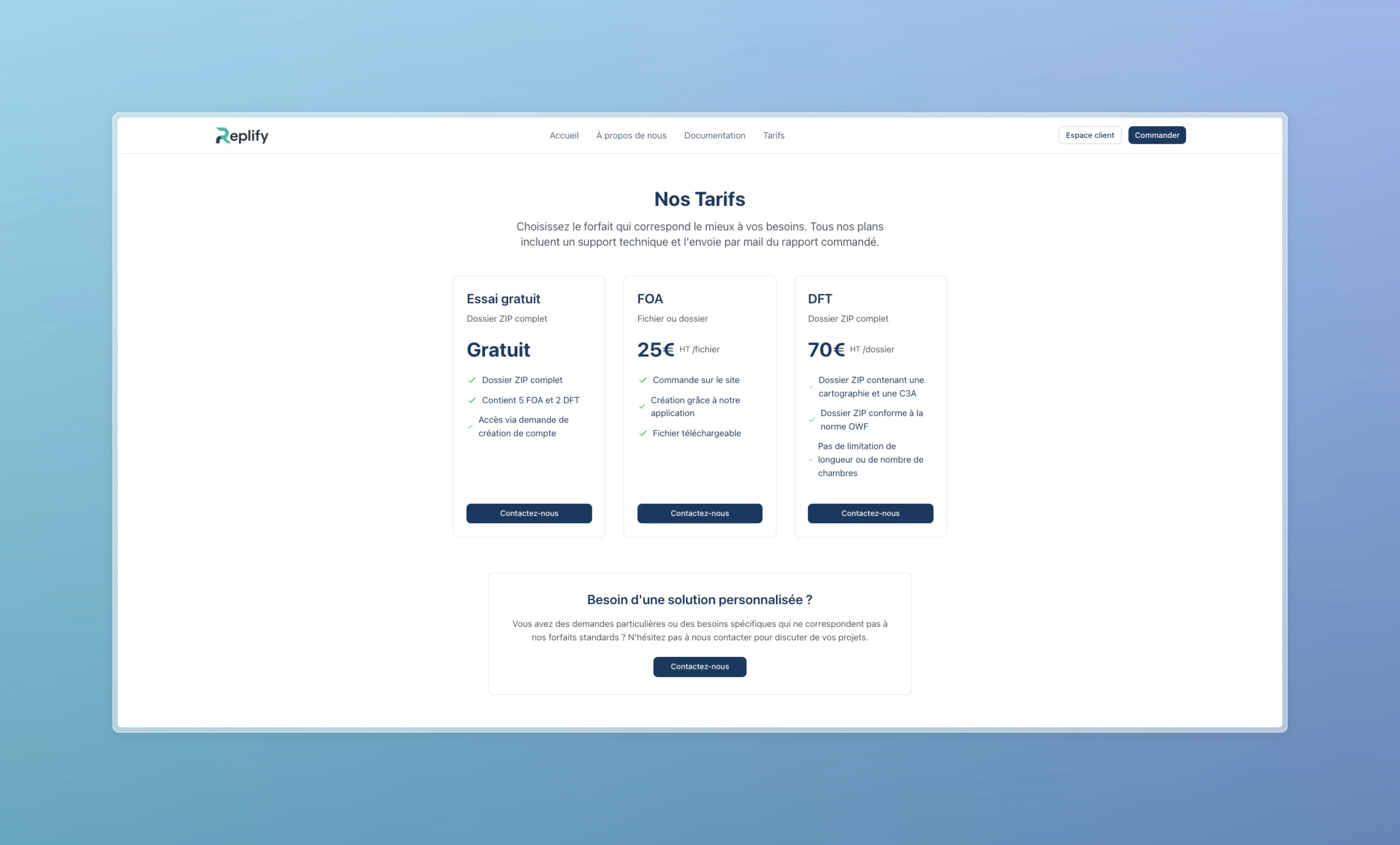
Our pricing
Available packages with included services details and technical support
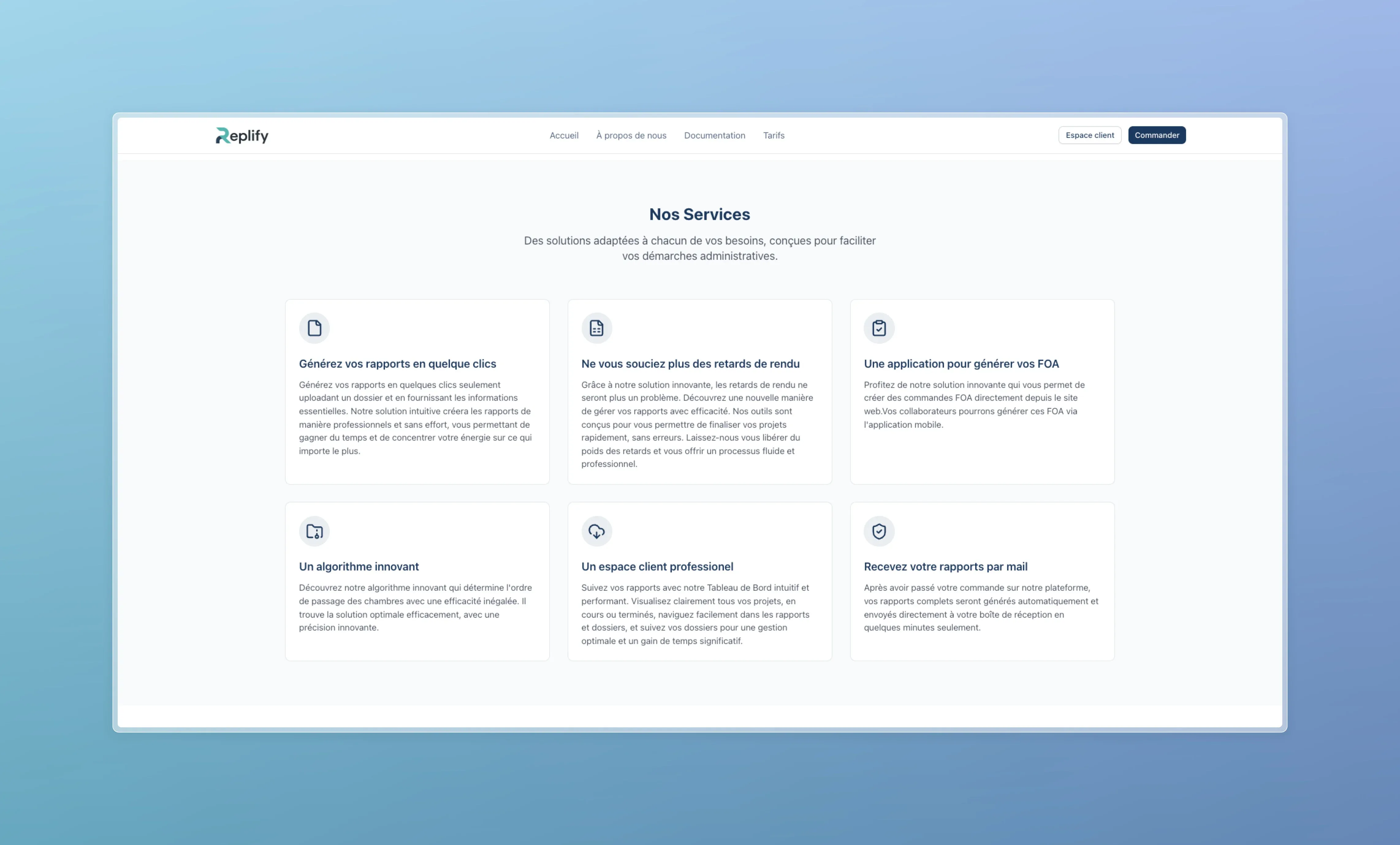
Our services
Tailored solutions to facilitate administrative procedures including report generation, delay management and mobile application
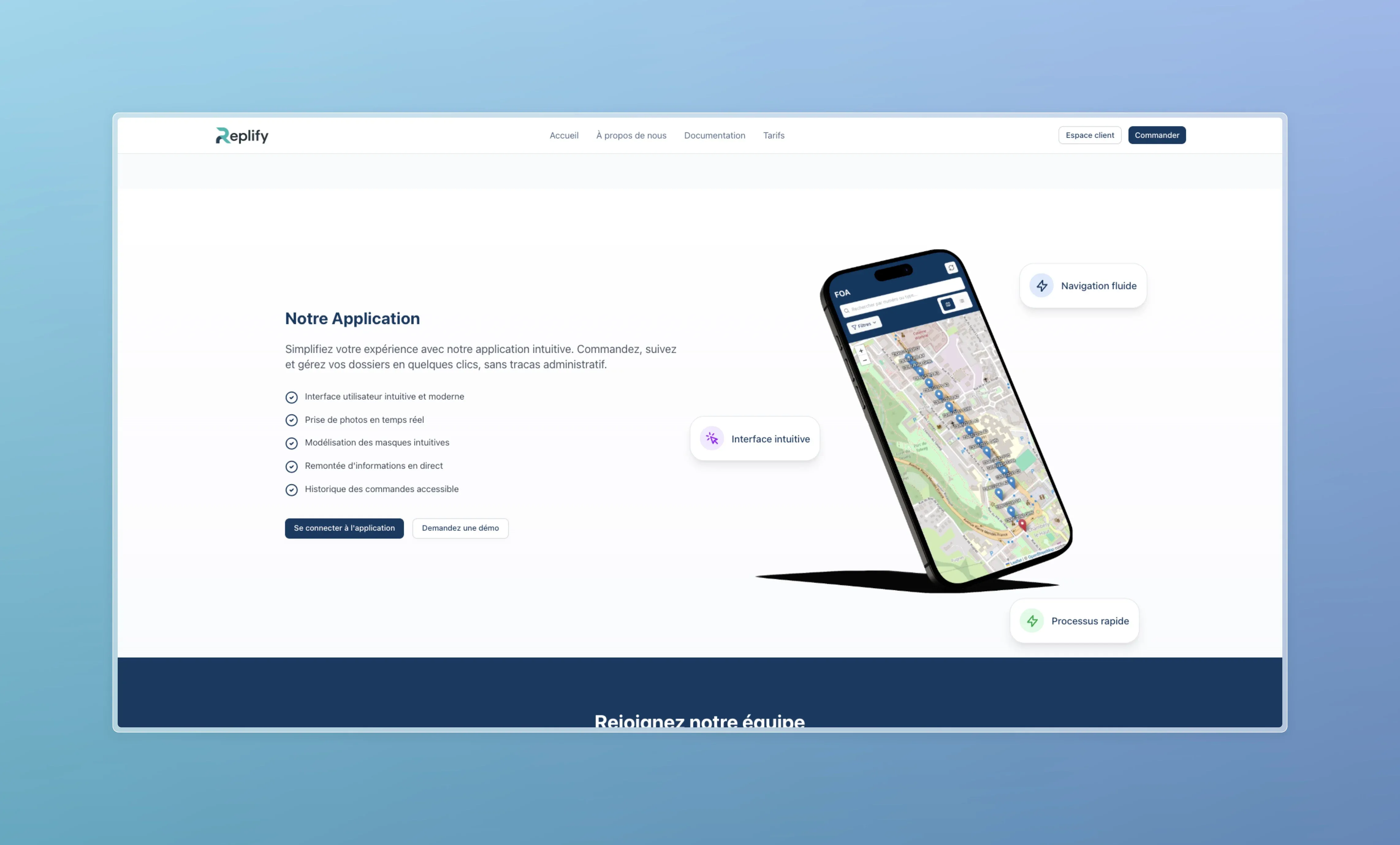
Our application
Intuitive application to order, track and manage files with modern interface, real-time photo capture and order history
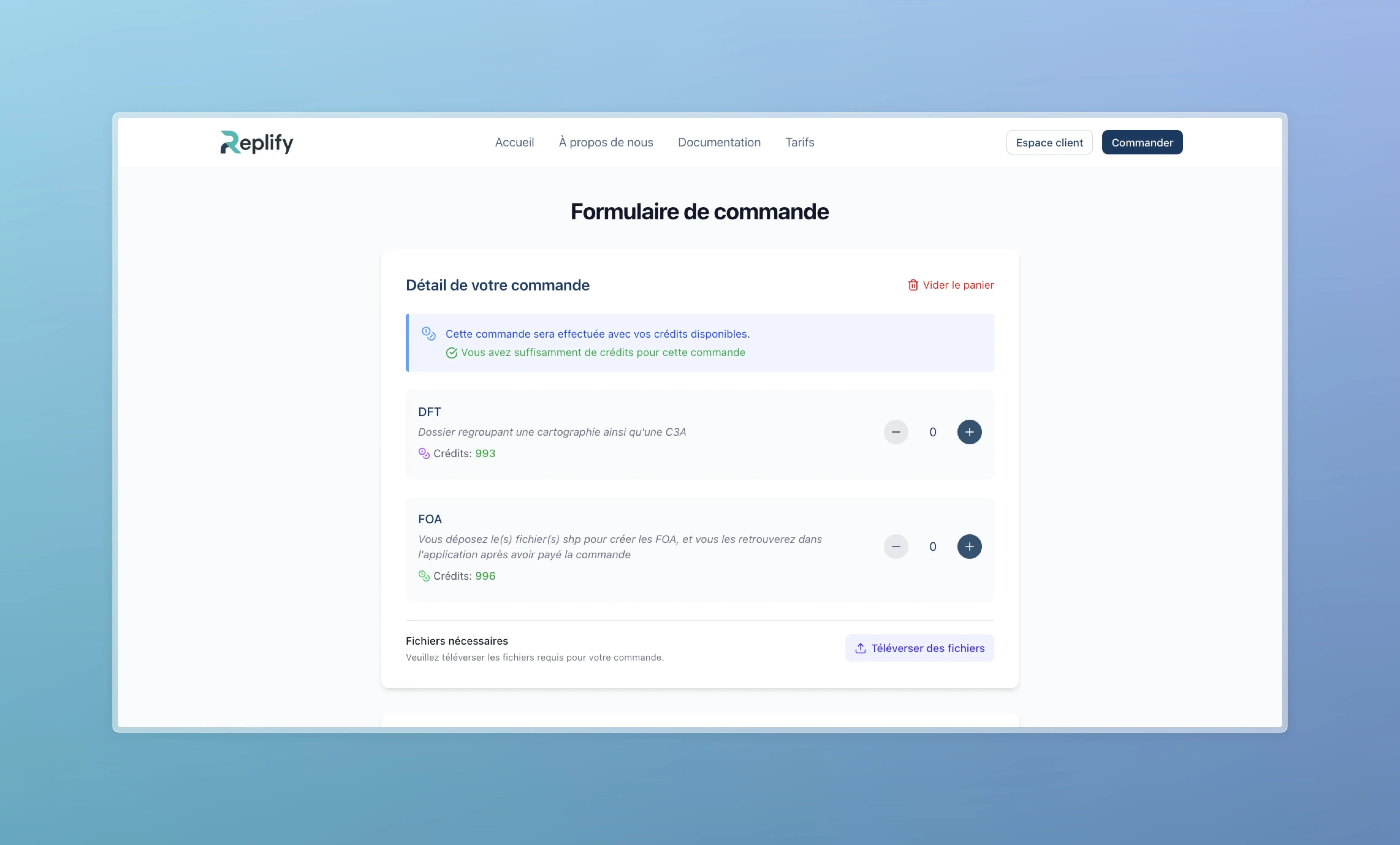
Order form - Quote
Quote form allowing selection of DFT and FOA reports with available credits breakdown
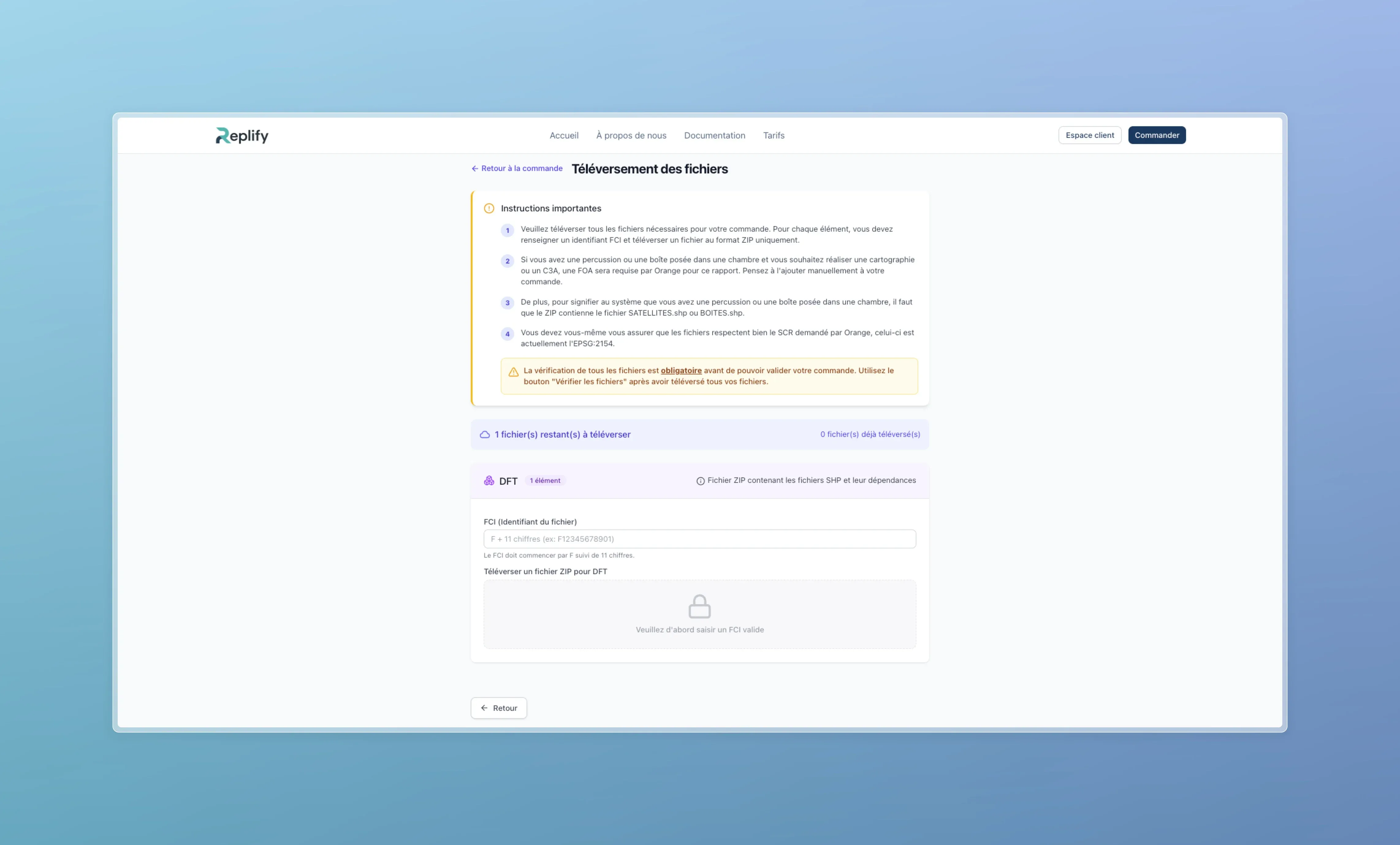
File upload - Empty form
Upload step with detailed instructions and drag-and-drop area for DFT files
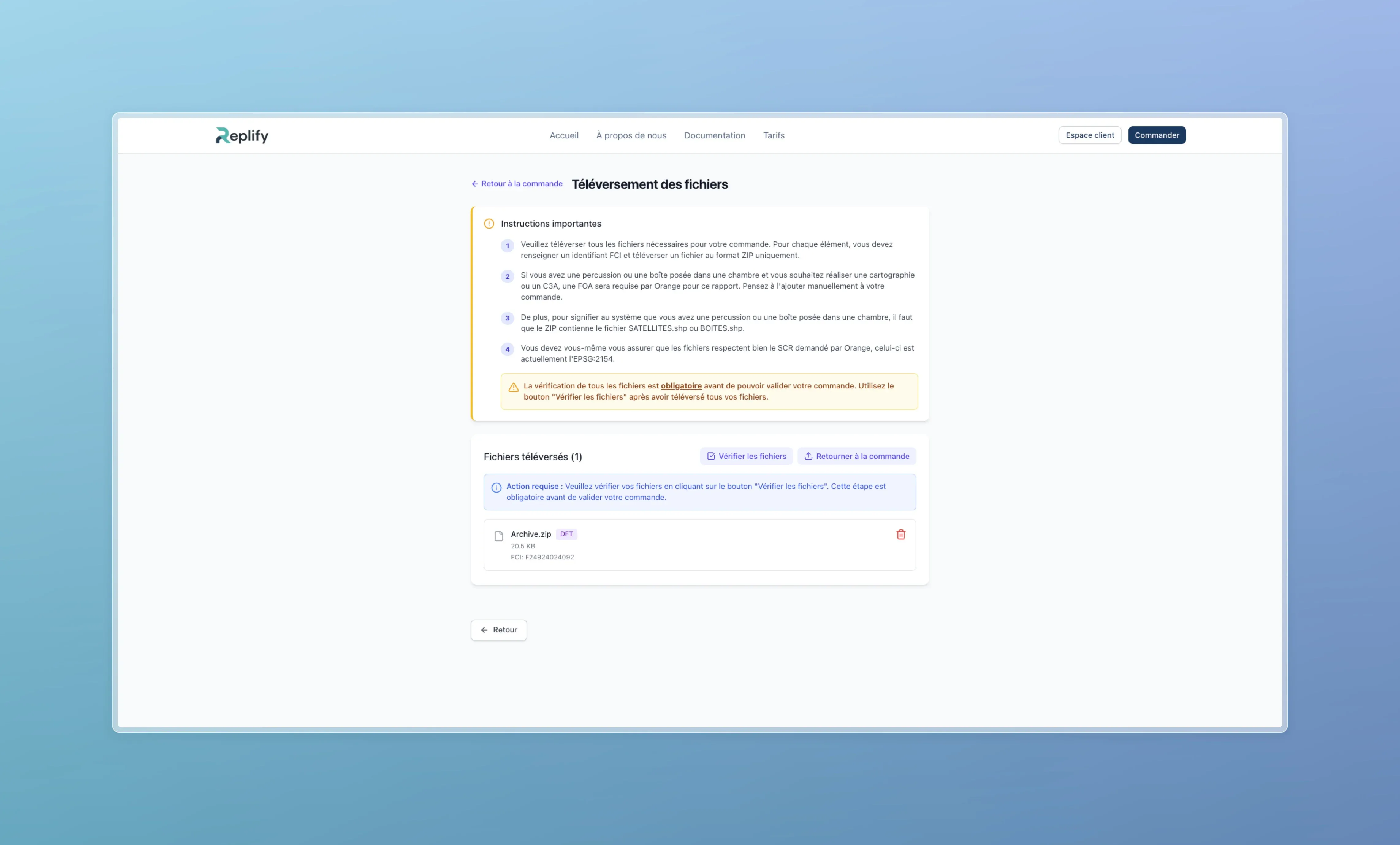
File upload - Completed
Final step of file upload for DFT order with successful validation and verification option
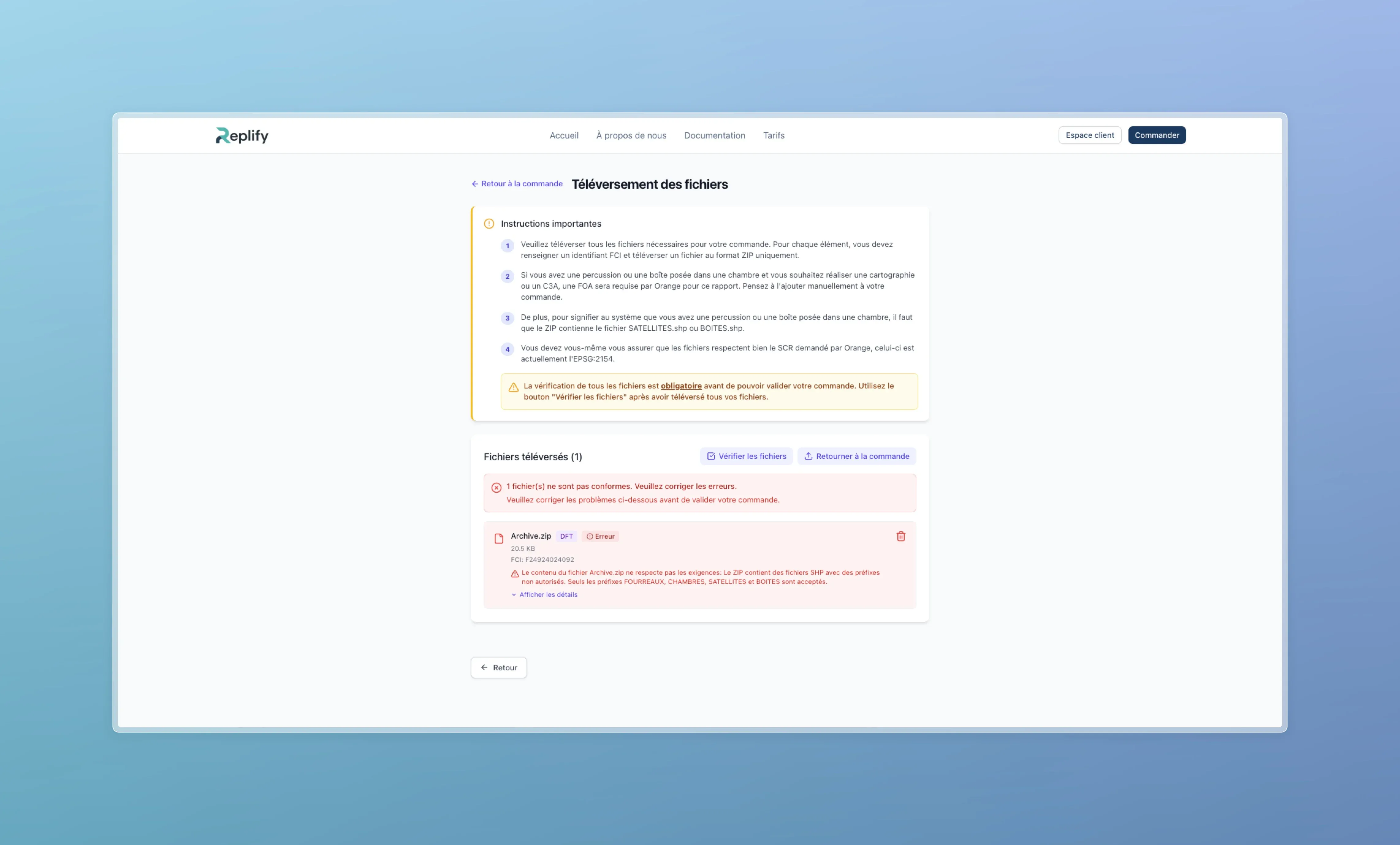
File upload - Failed
Upload step showing validation errors with details about file compliance issues
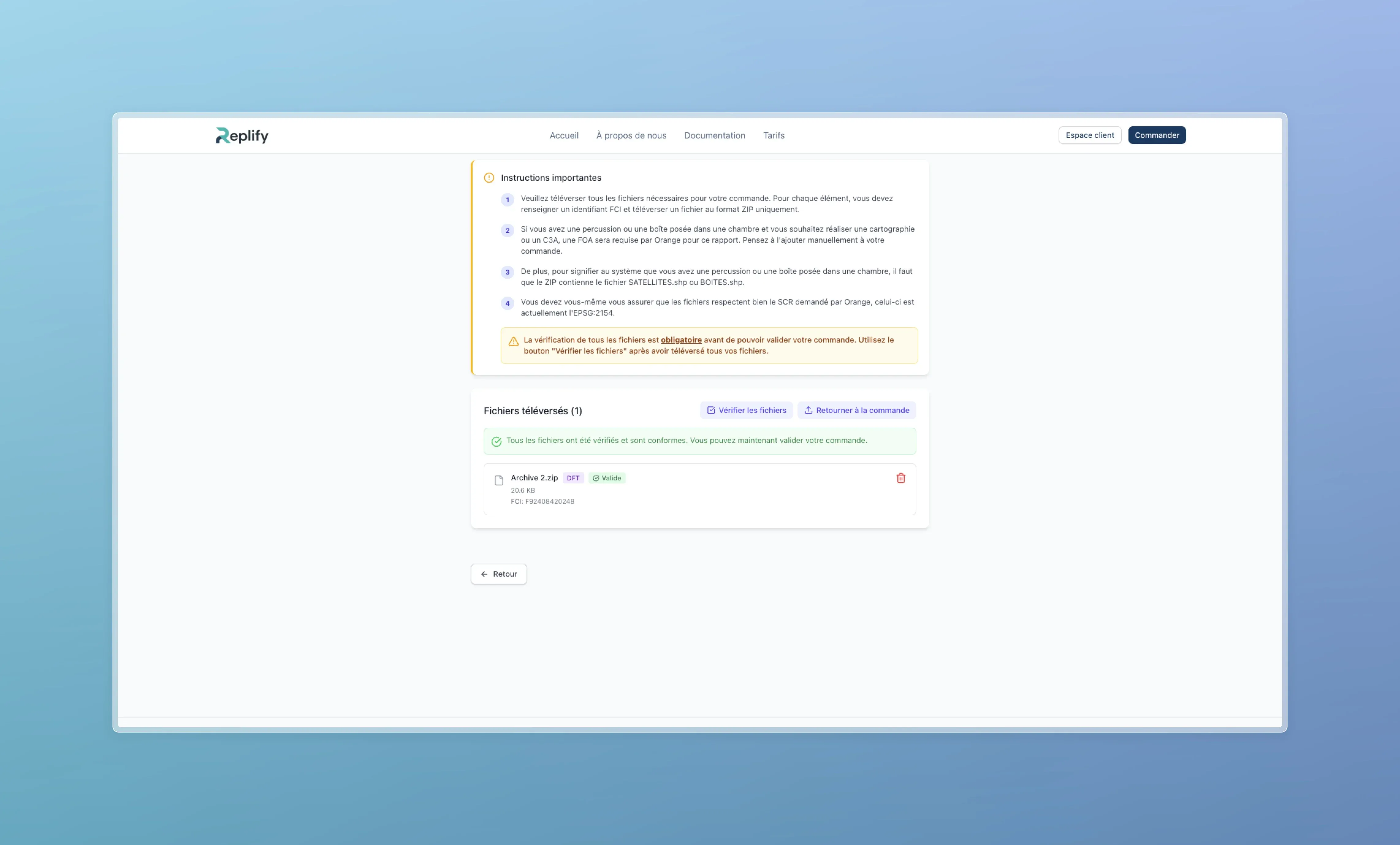
File upload - Successful validation
Upload step showing successful file validation with compliance message and option to return to order
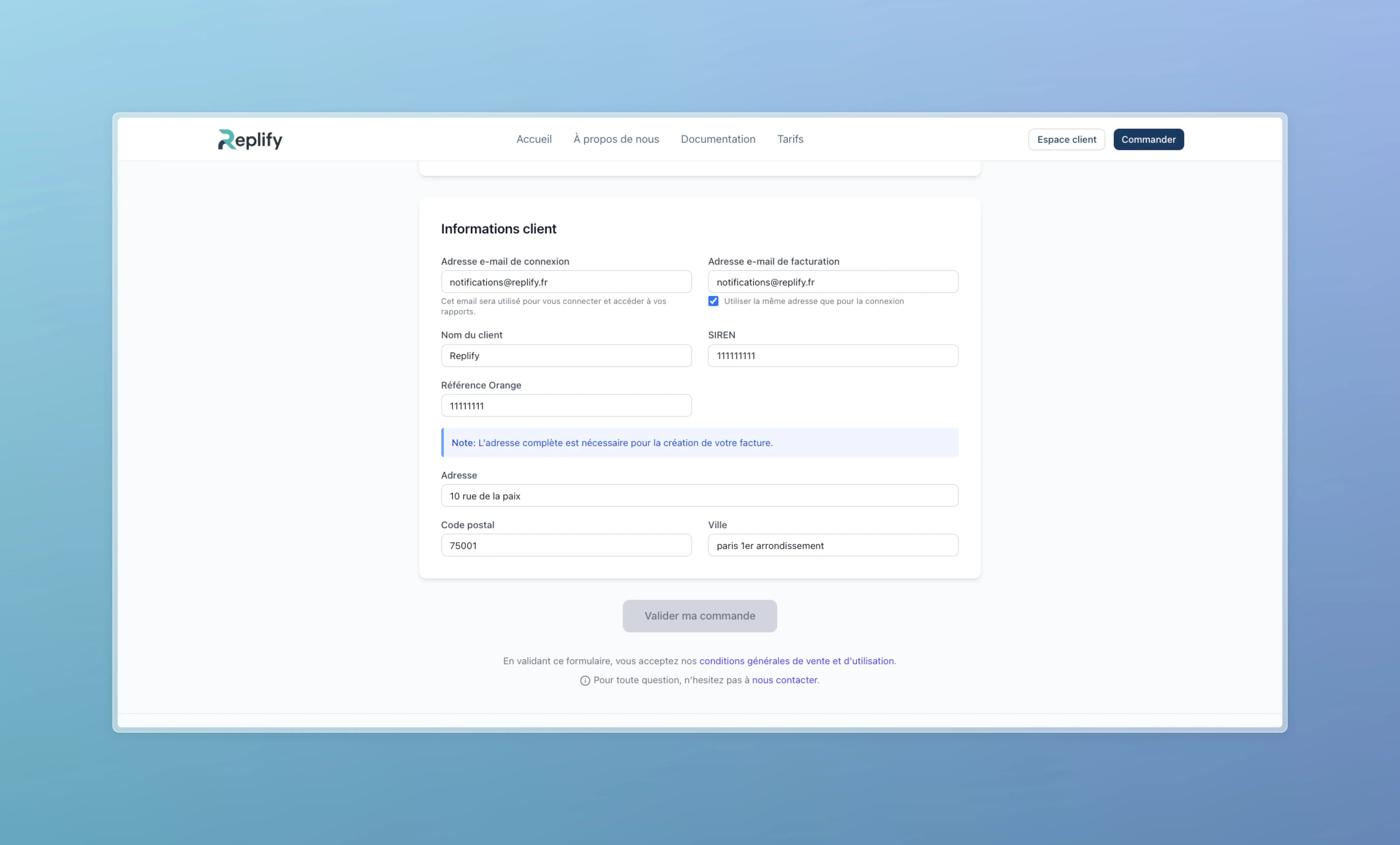
Order form - Client information
Final order step with client data collection including email addresses, SIREN and billing address
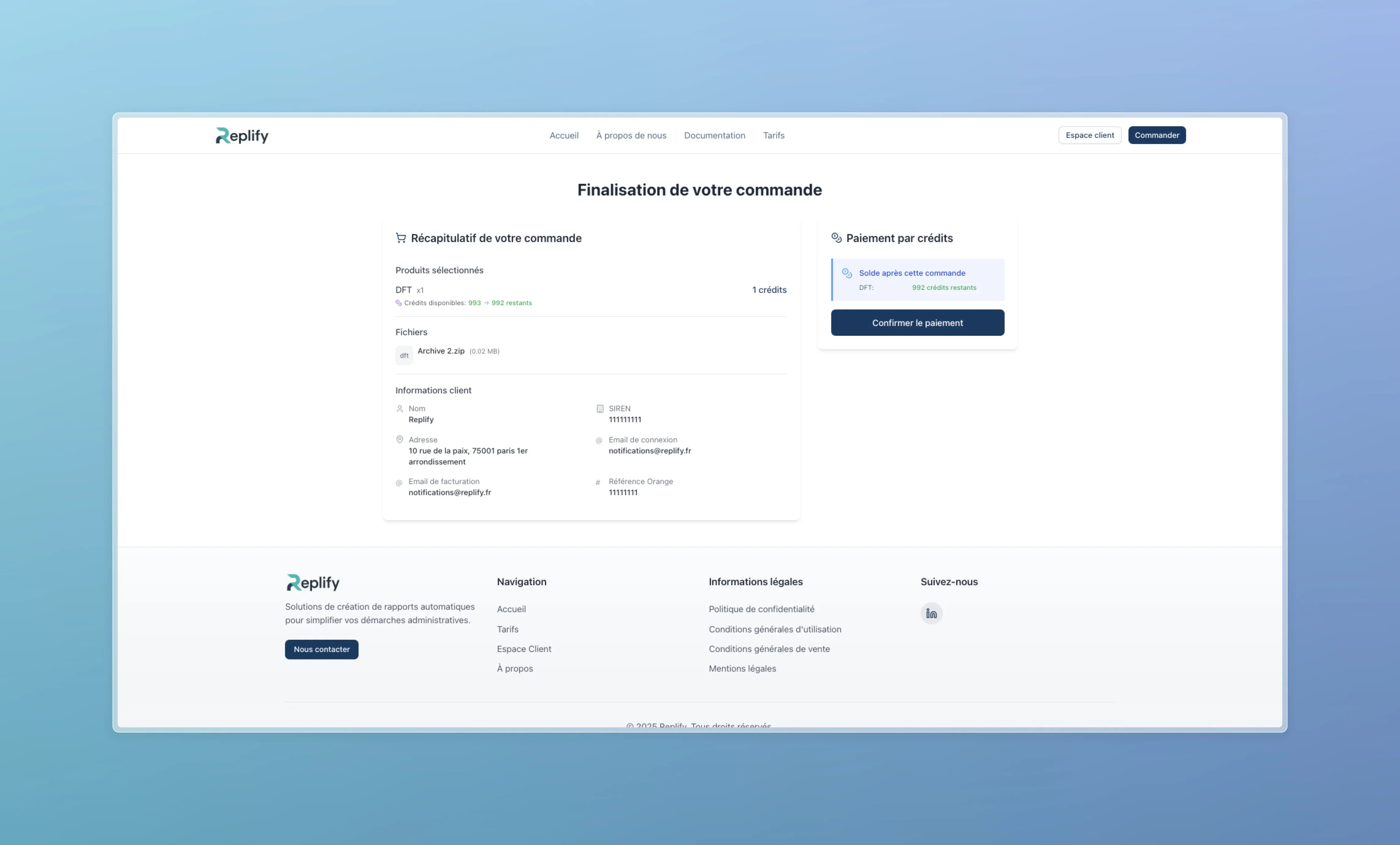
Order finalization - Summary
Final order step displaying summary of selected products, uploaded files and client information
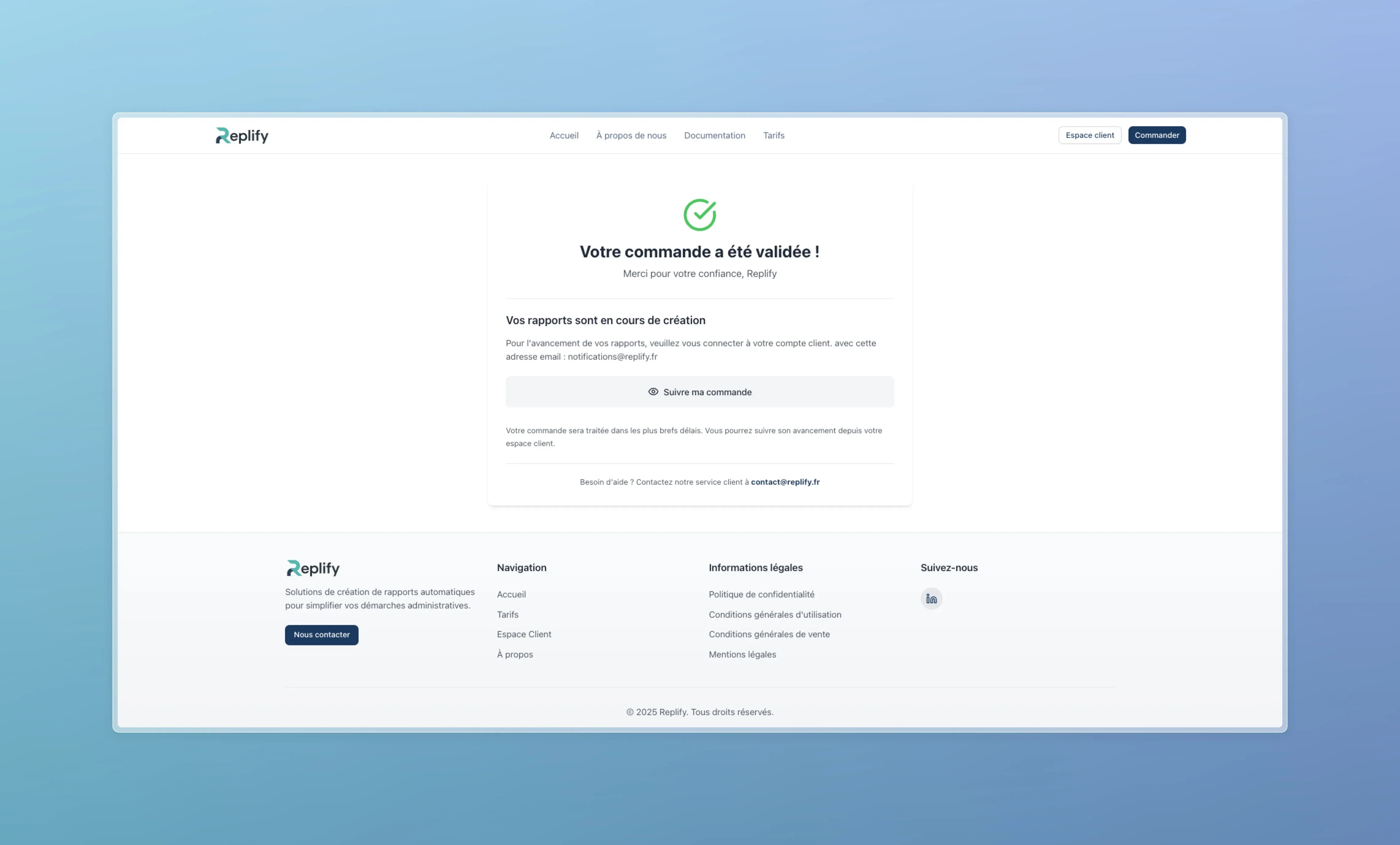
Validated order - Confirmation
Confirmation screen displaying order validation with information about ongoing report creation
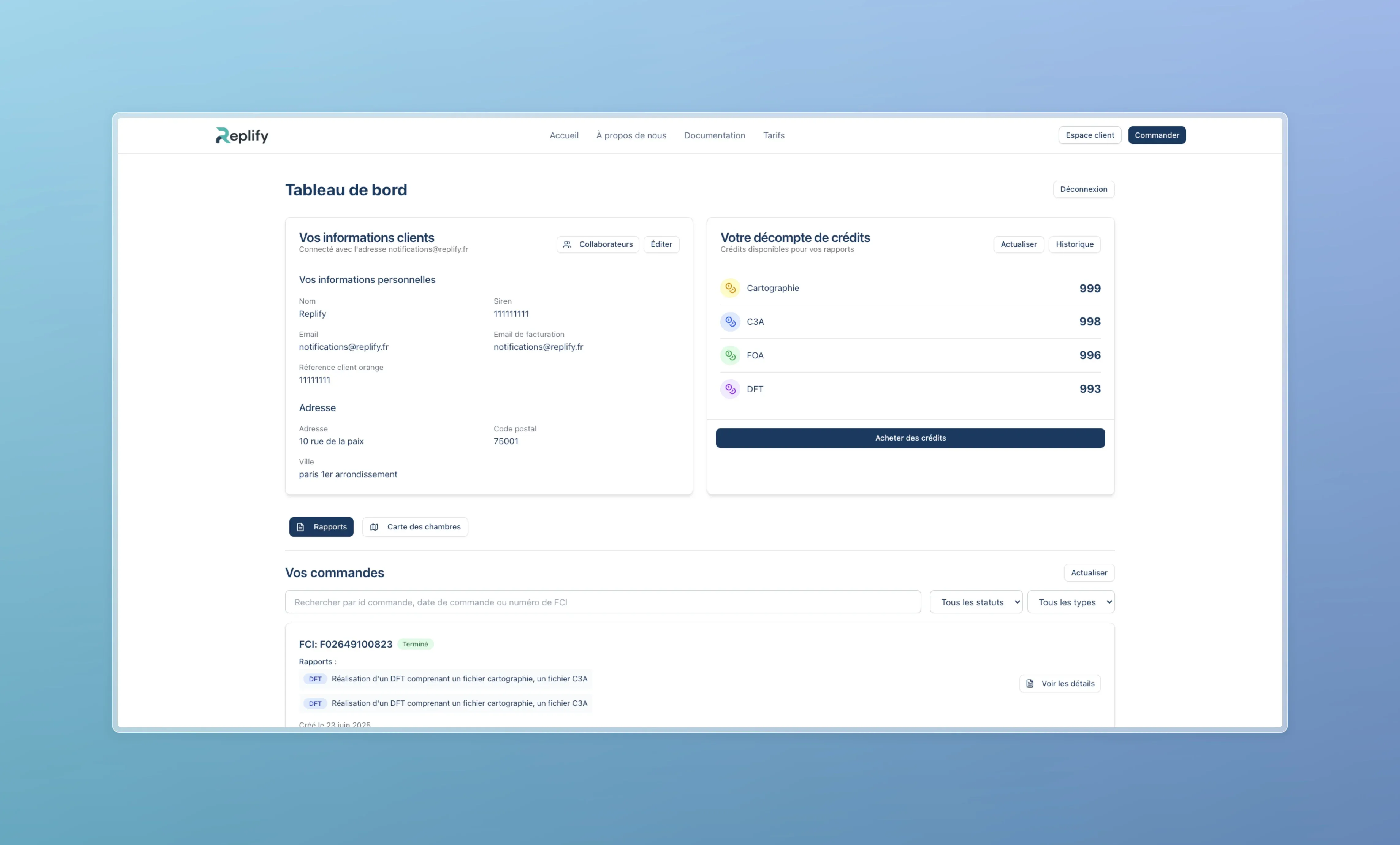
Client dashboard
Client dashboard with personal information, credit breakdown by report type and order history
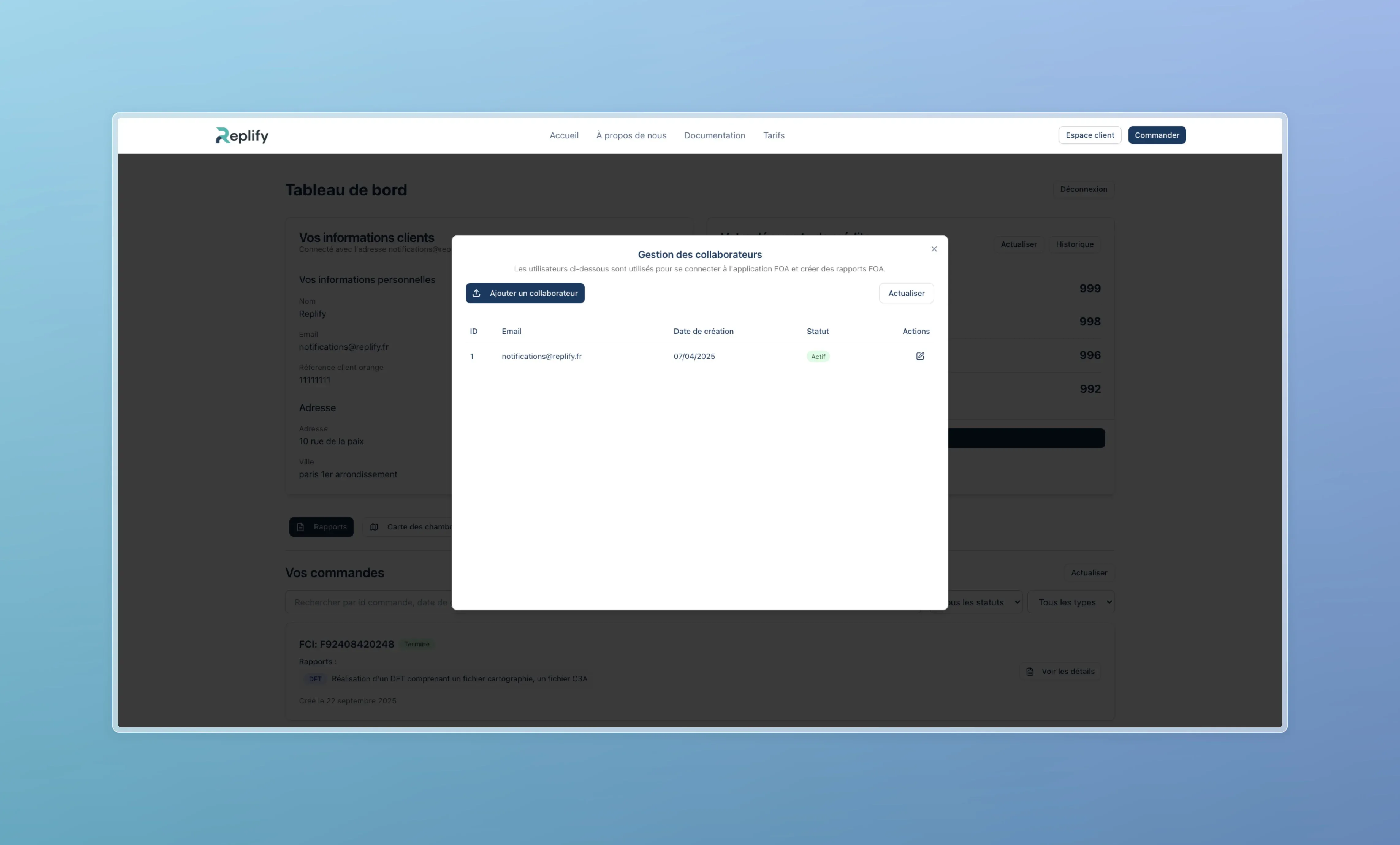
Client area - Manage collaborator
minimalist interface for manage collaborator
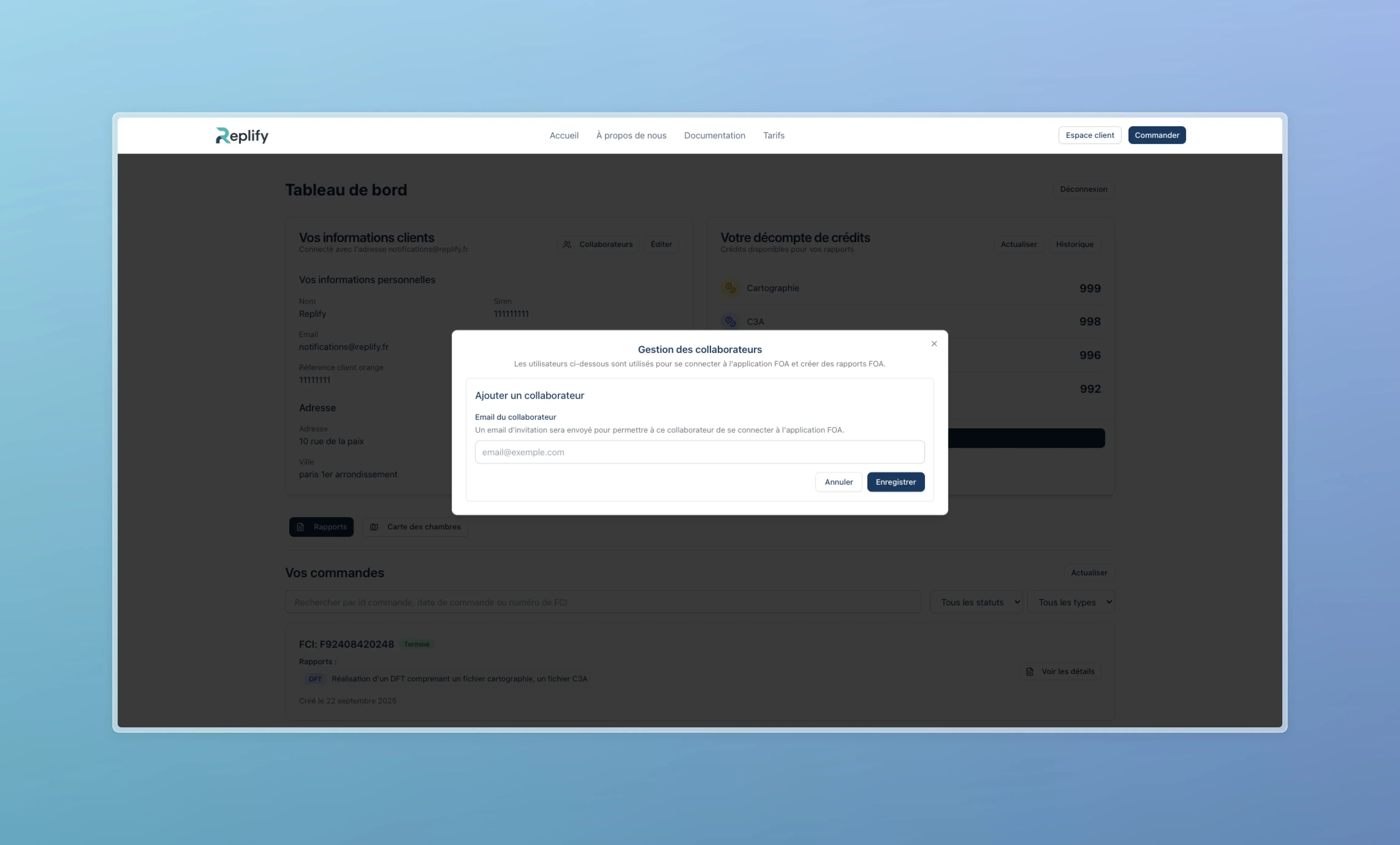
Client area - Add collaborator
Creation interface allowing collaborator addition with automatic email invitation sending
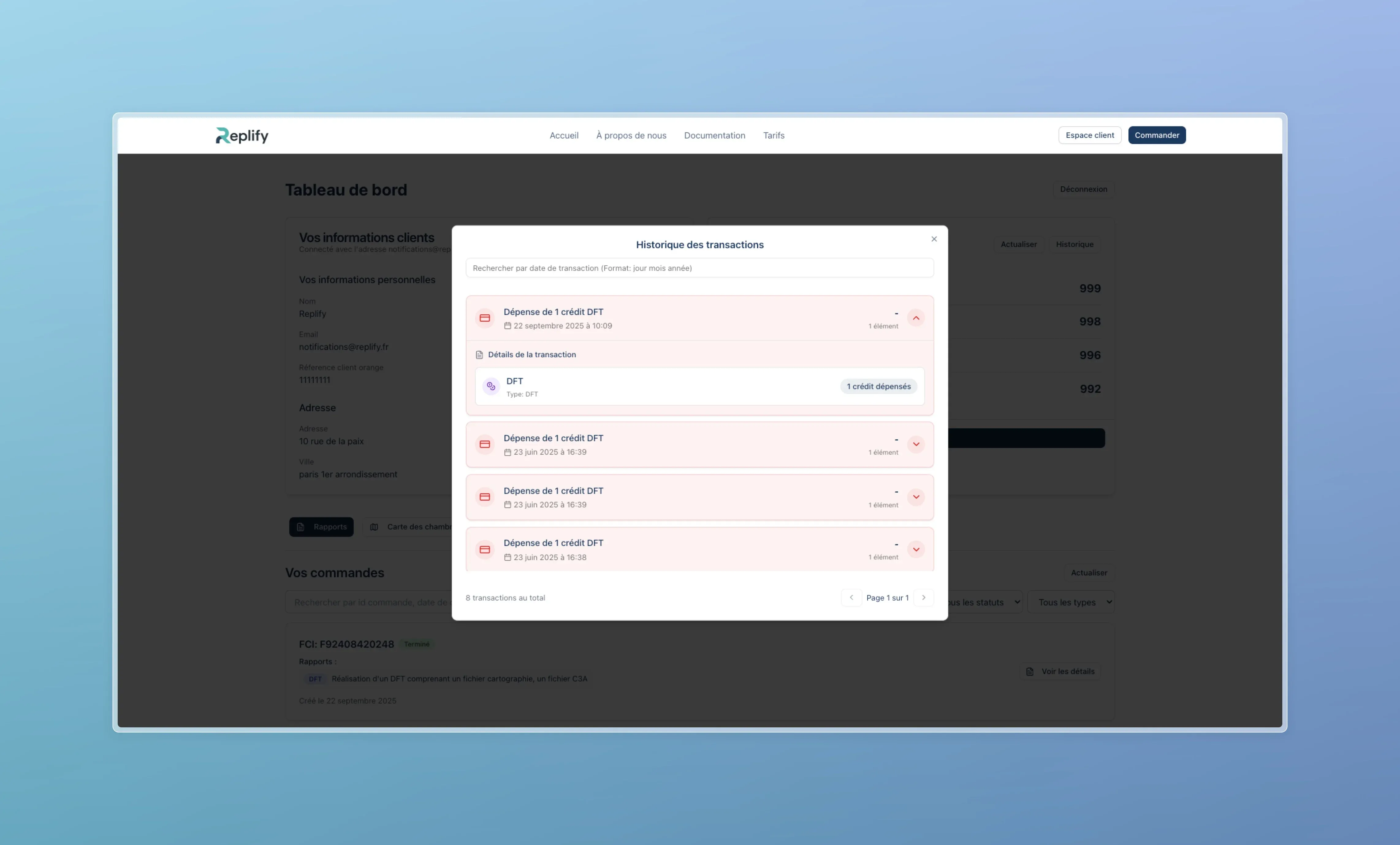
Client area - Transaction history
History module displaying all DFT credit transactions with dates and expense details
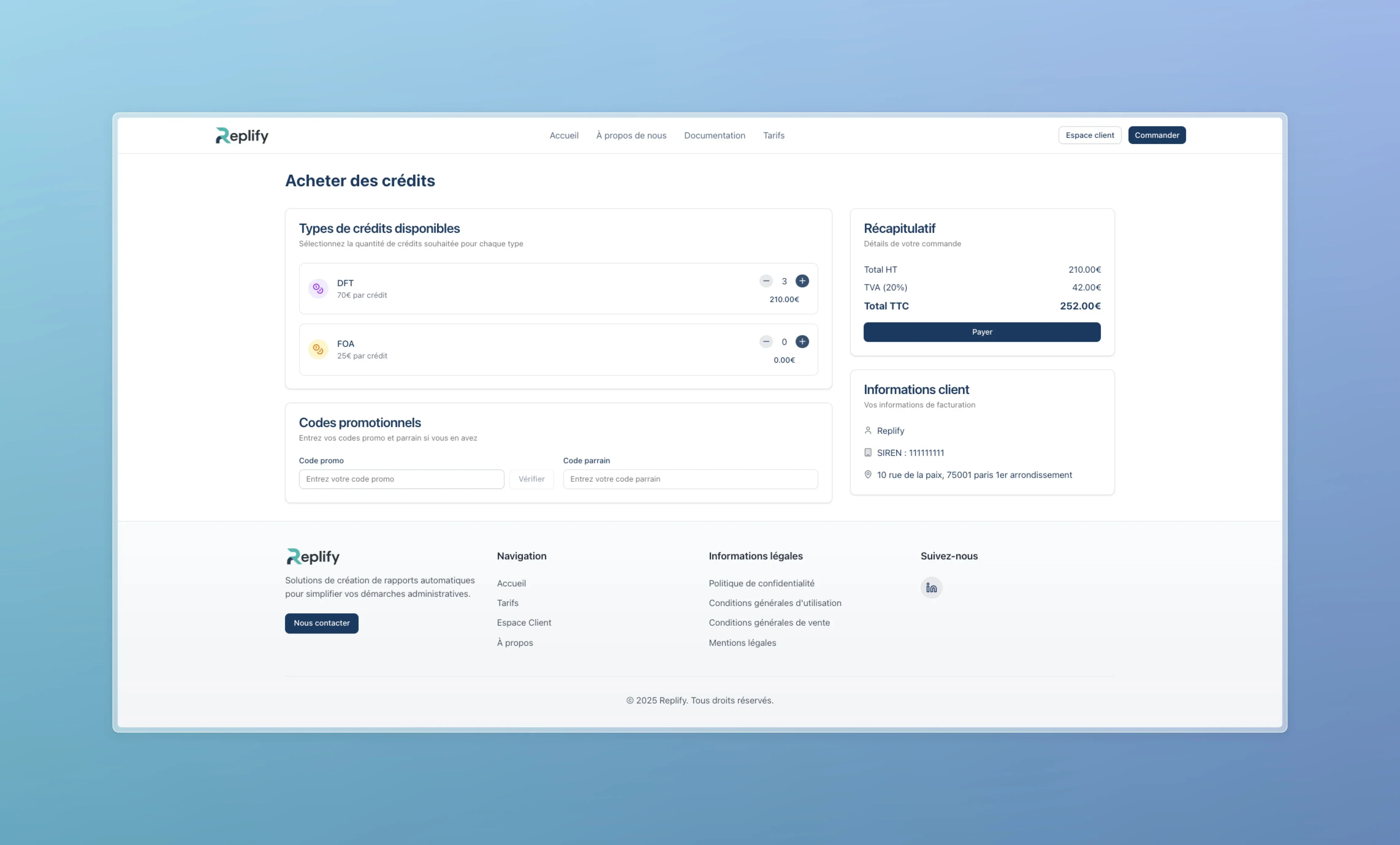
Credit purchase - Selection
Purchase page allowing selection of DFT and FOA credits with price summary and promo code options
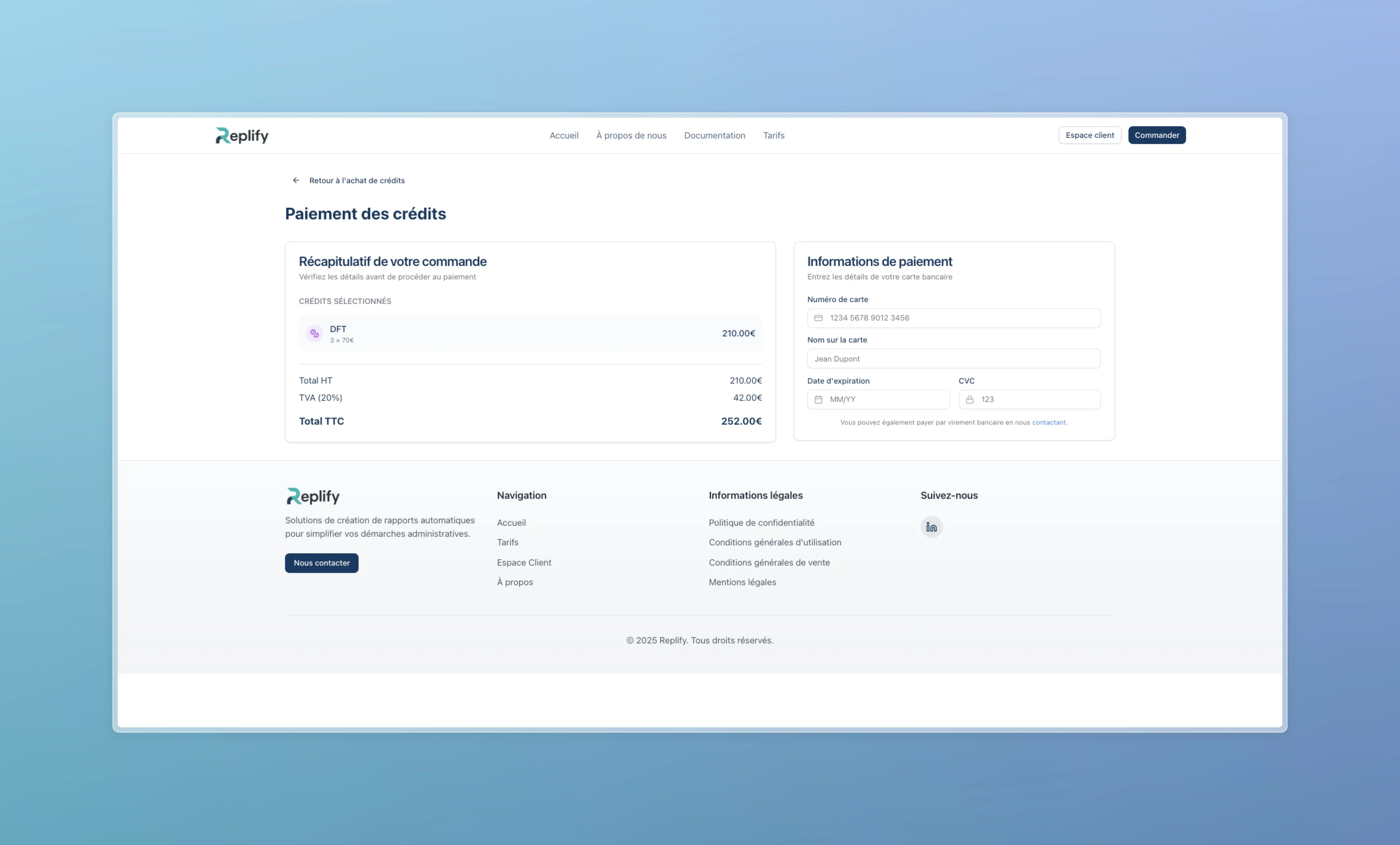
Credit payment - Banking information
Payment page with order summary and banking card information input form
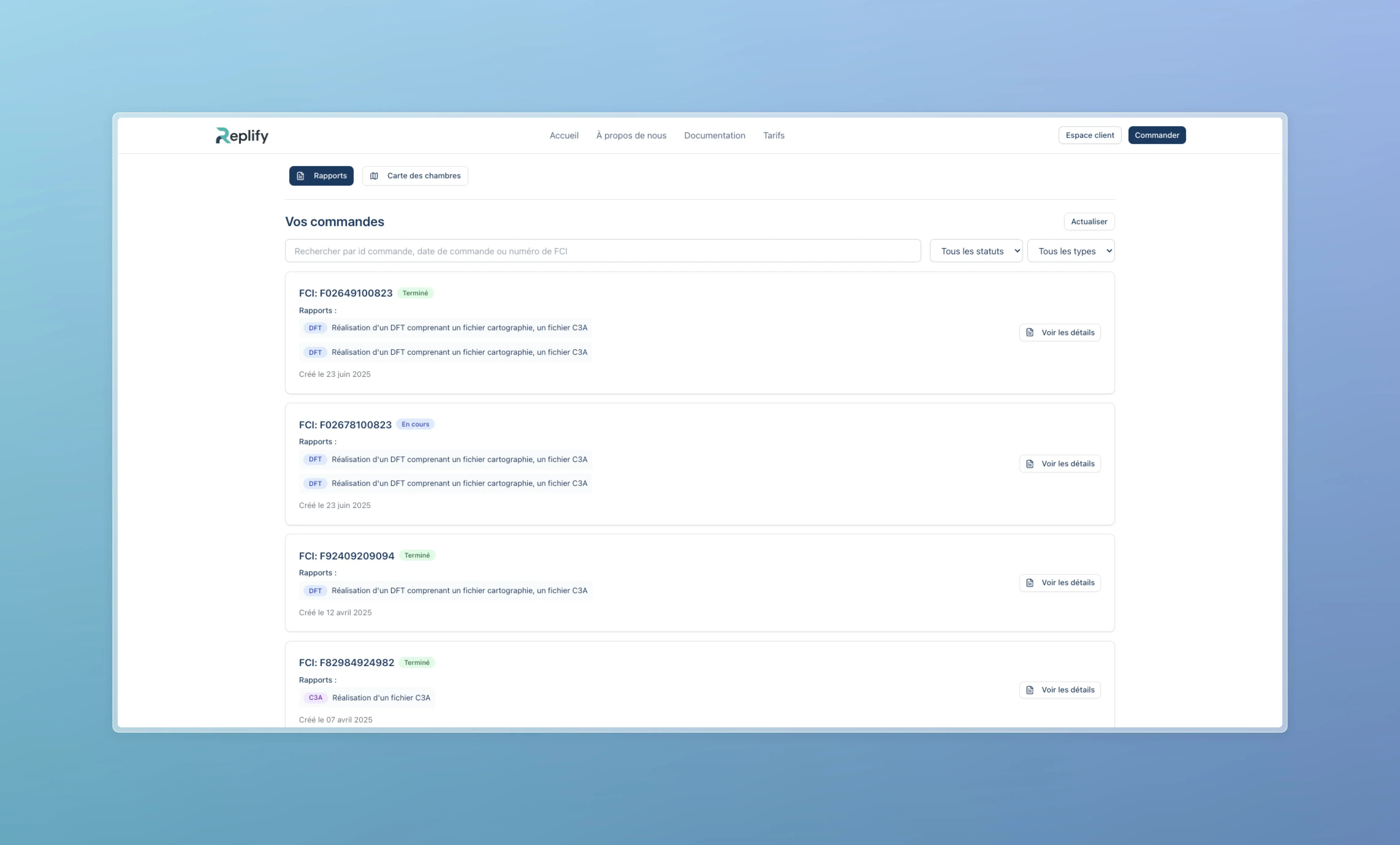
Report management
List of orders and reports with statuses and report types (DFT) including cartographic and C3A files
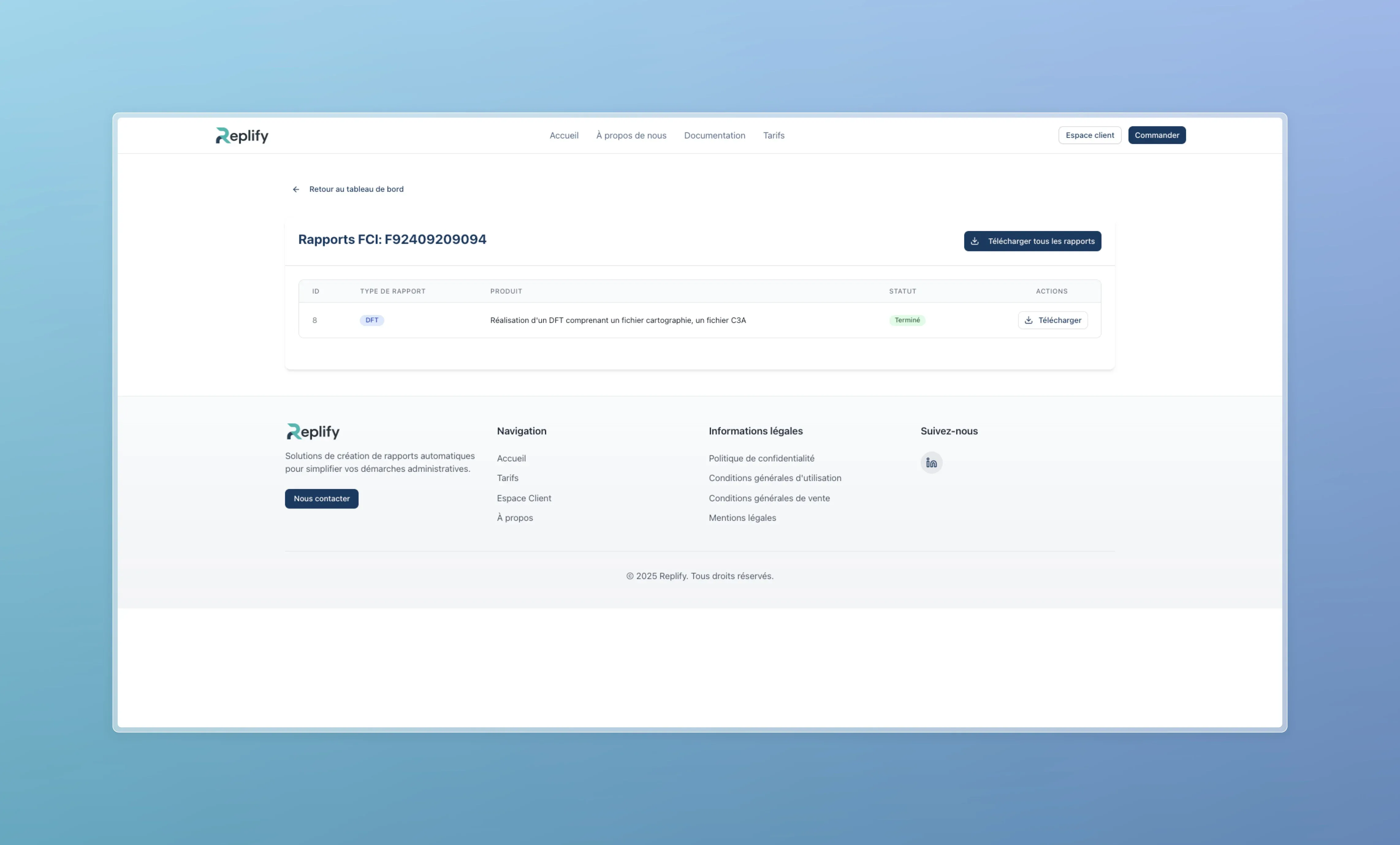
Report details
Detailed view of FCI report with download capability and DFT completion information
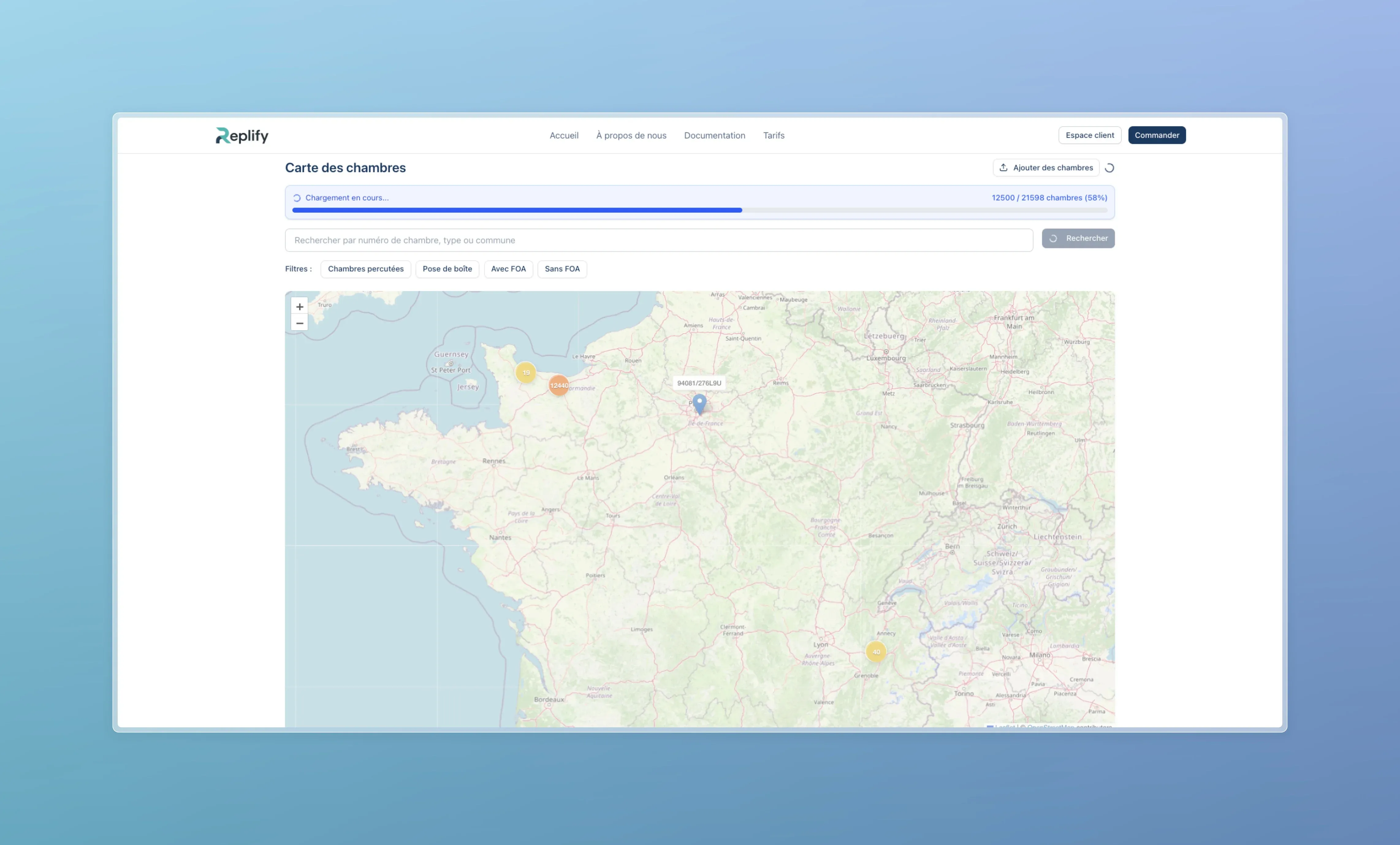
Room map - Loading
Loading of the interactive room map with available filters and search options
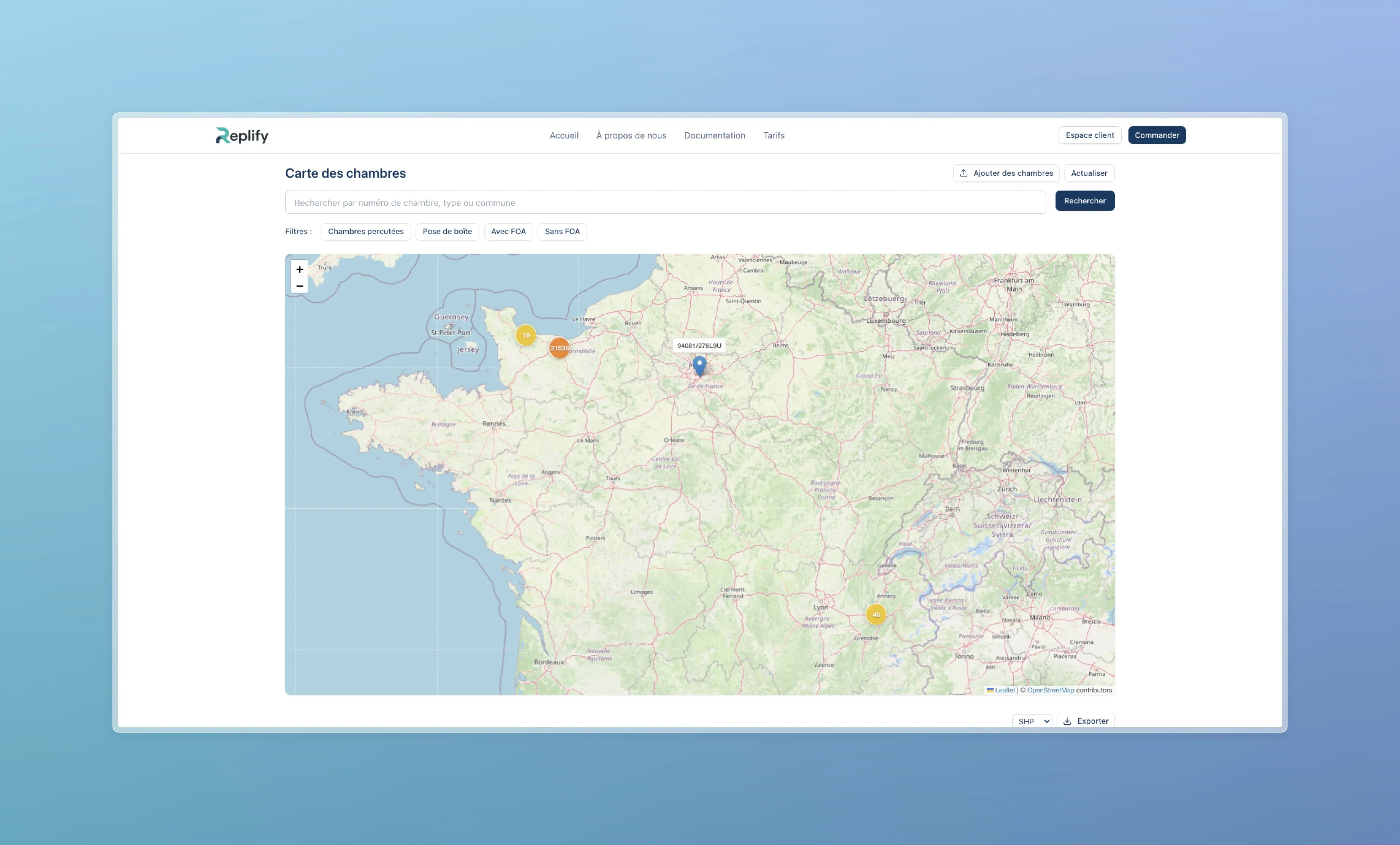
Room map - Display
Cartographic visualization of rooms with colored markers and filters by availability and type
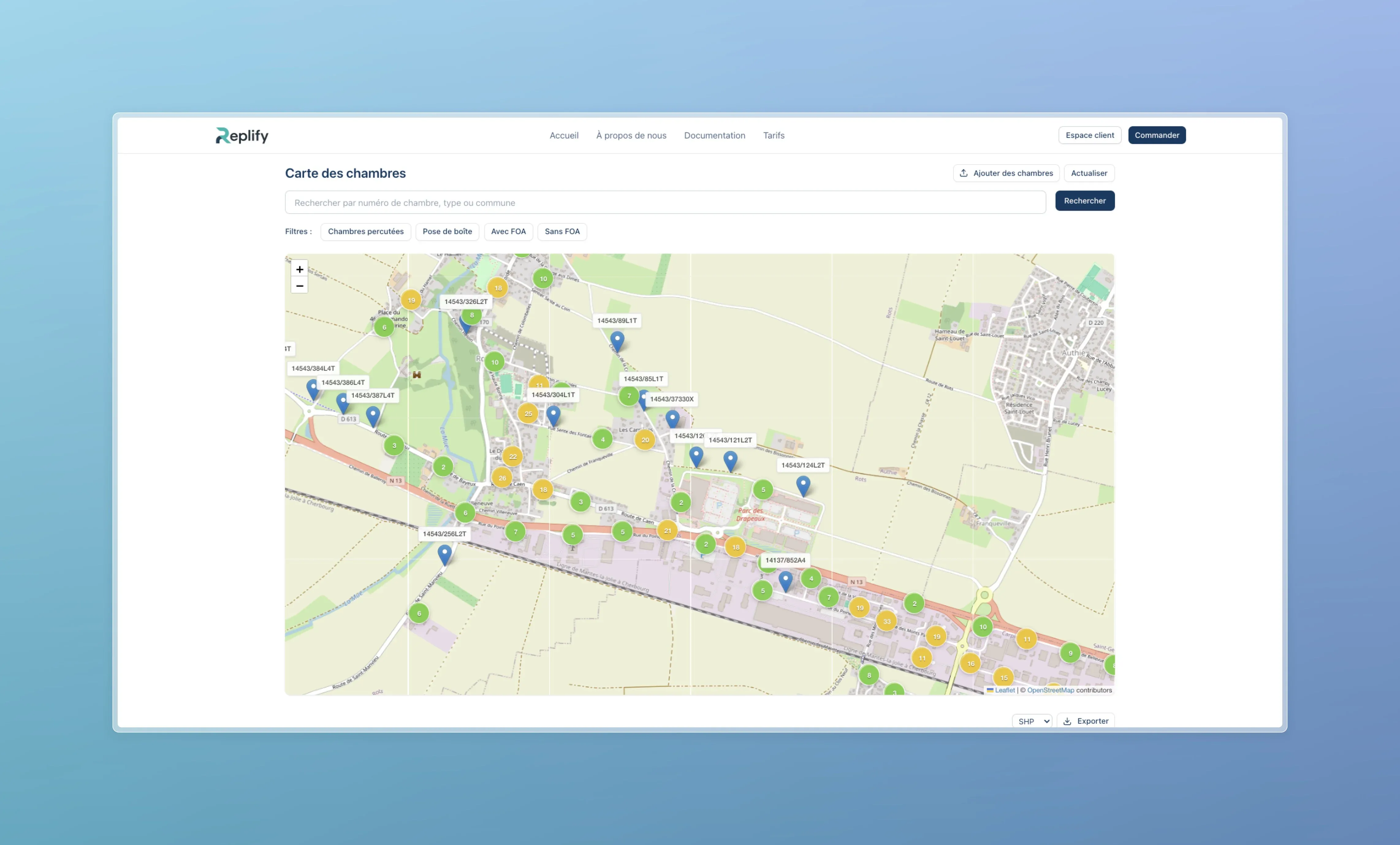
Room map - Close view
Zoomed map showing available room density with cadastral references and status-colored markers
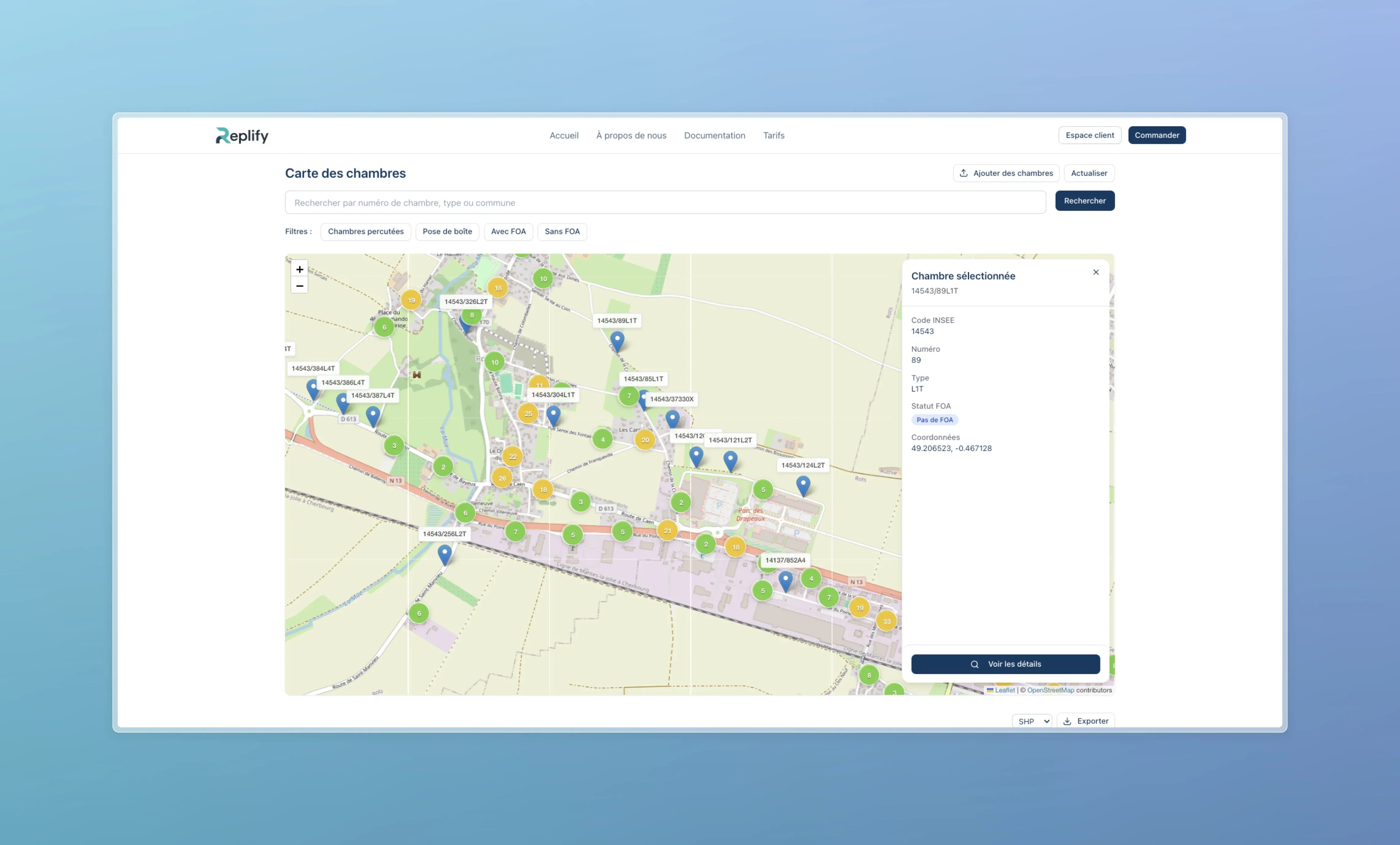
Room map - Detail panel
Map view with sidebar displaying detailed room information including coordinates and FOA status
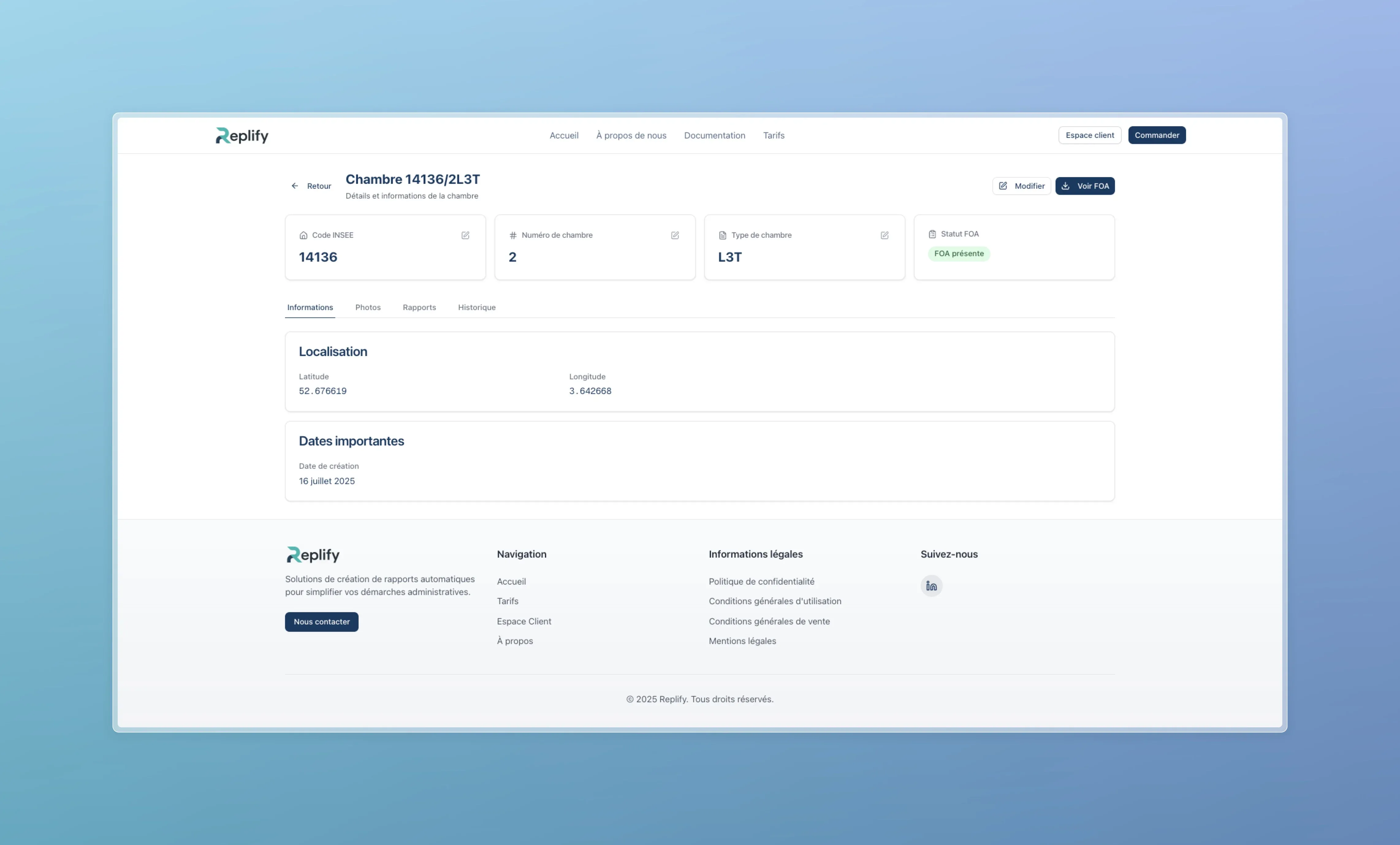
Room details - General information
Geolocation data (latitude/longitude) and creation date of the selected room
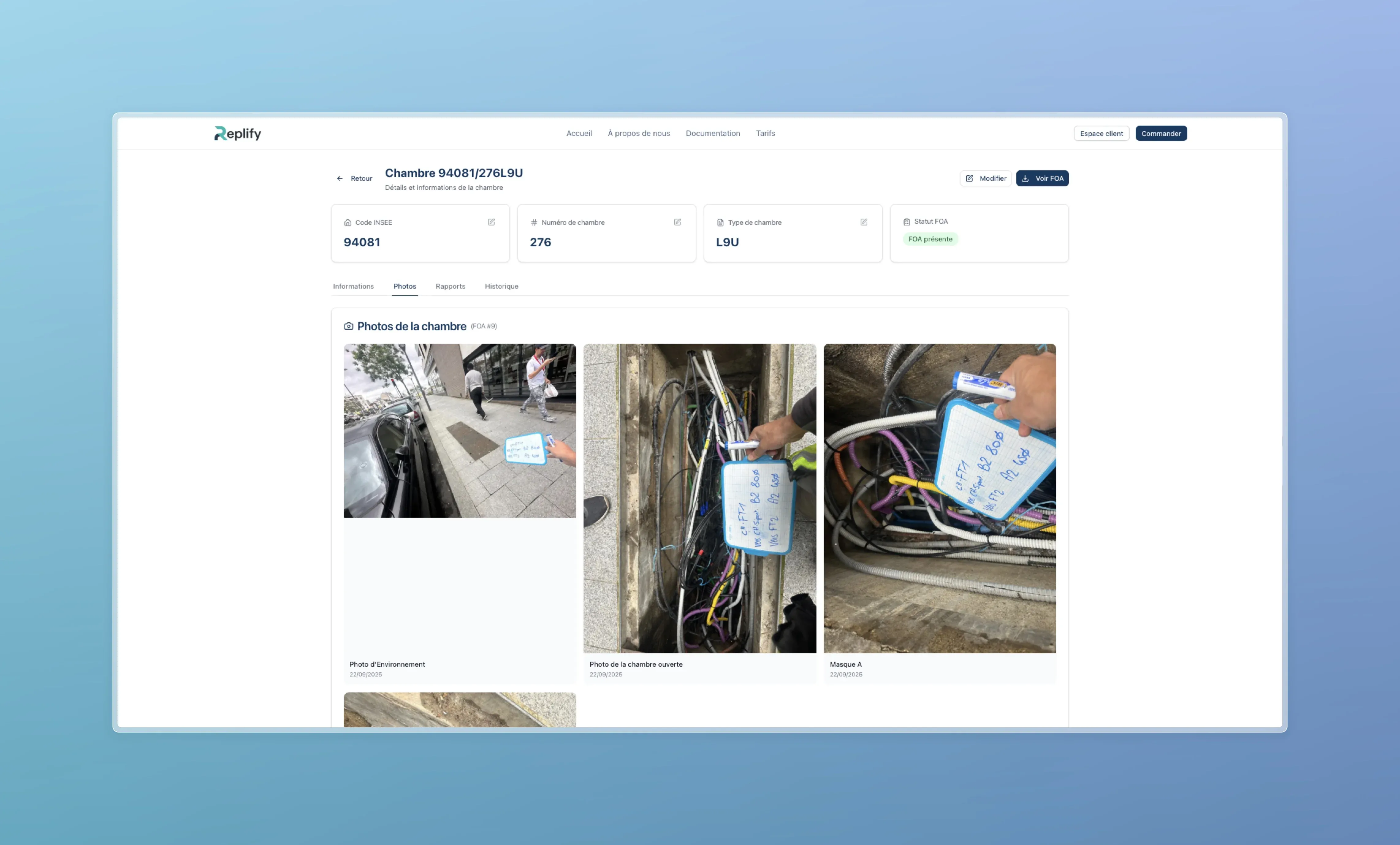
Room details - Photos
Collection of room photos including environment photos, open room and C mark with timestamps
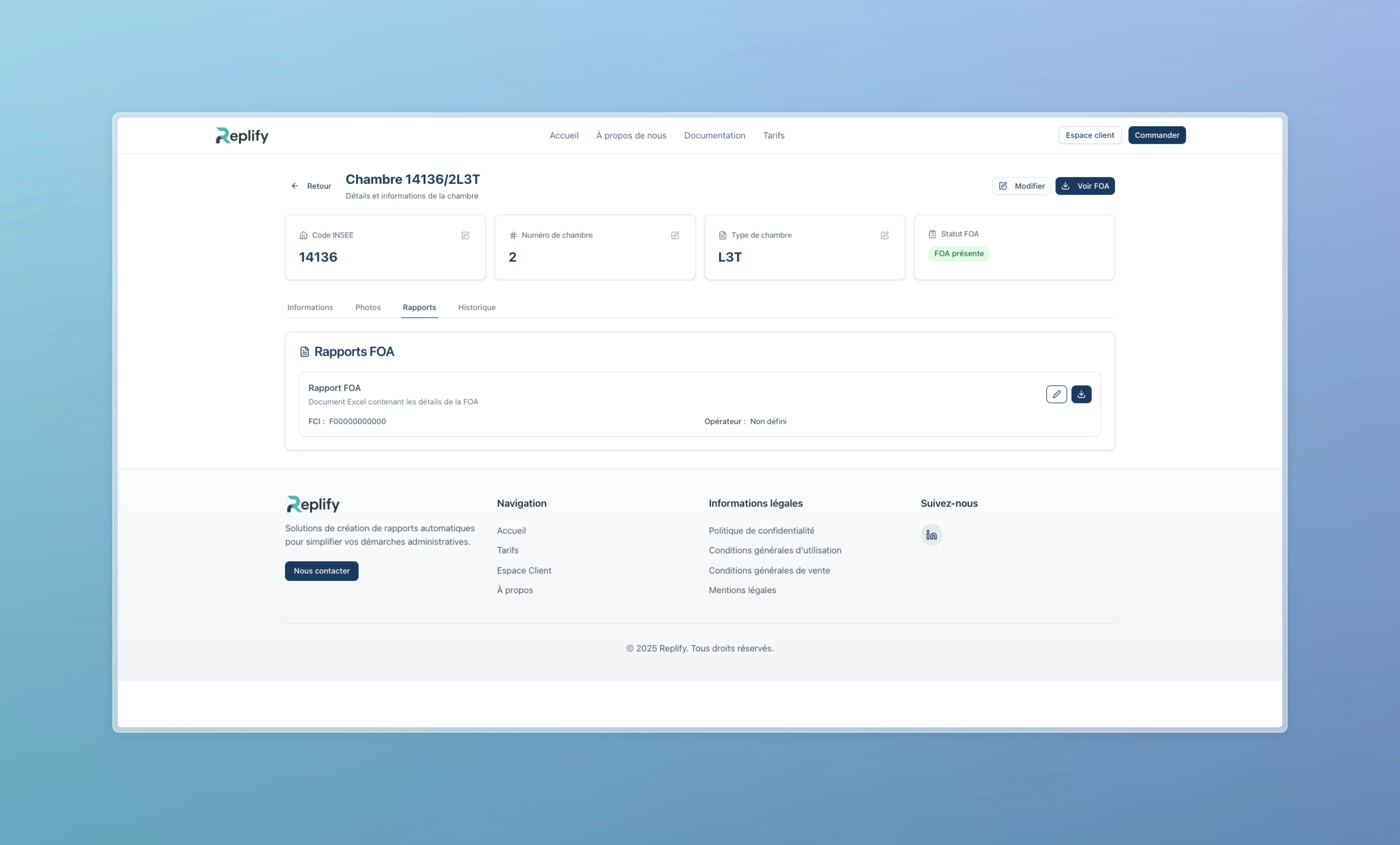
Room details - FOA reports
View of FOA reports associated with a specific room with FCI identifier information and operator status
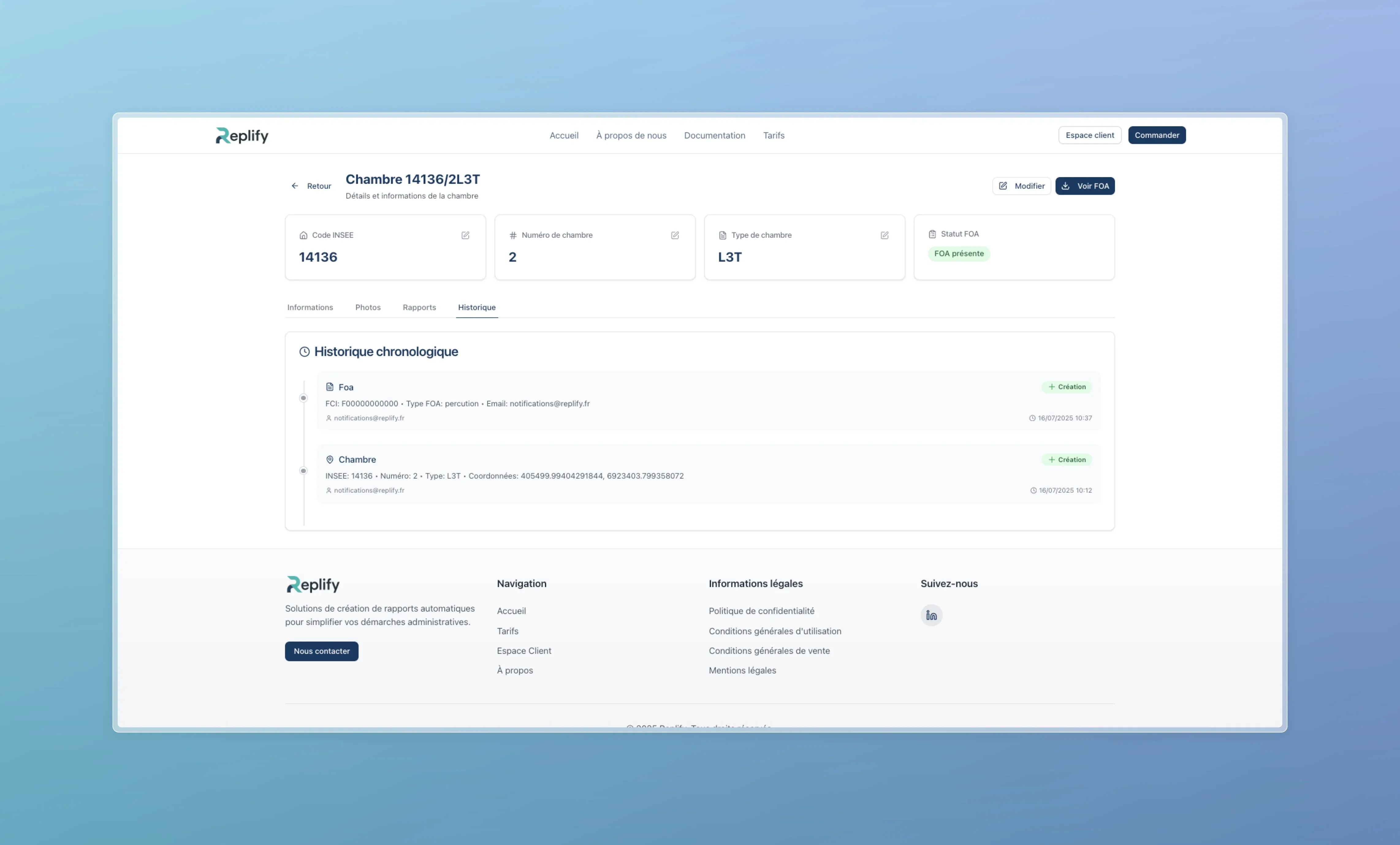
Room details - History
Timeline of room-related events including FOA and room creation with precise timestamps
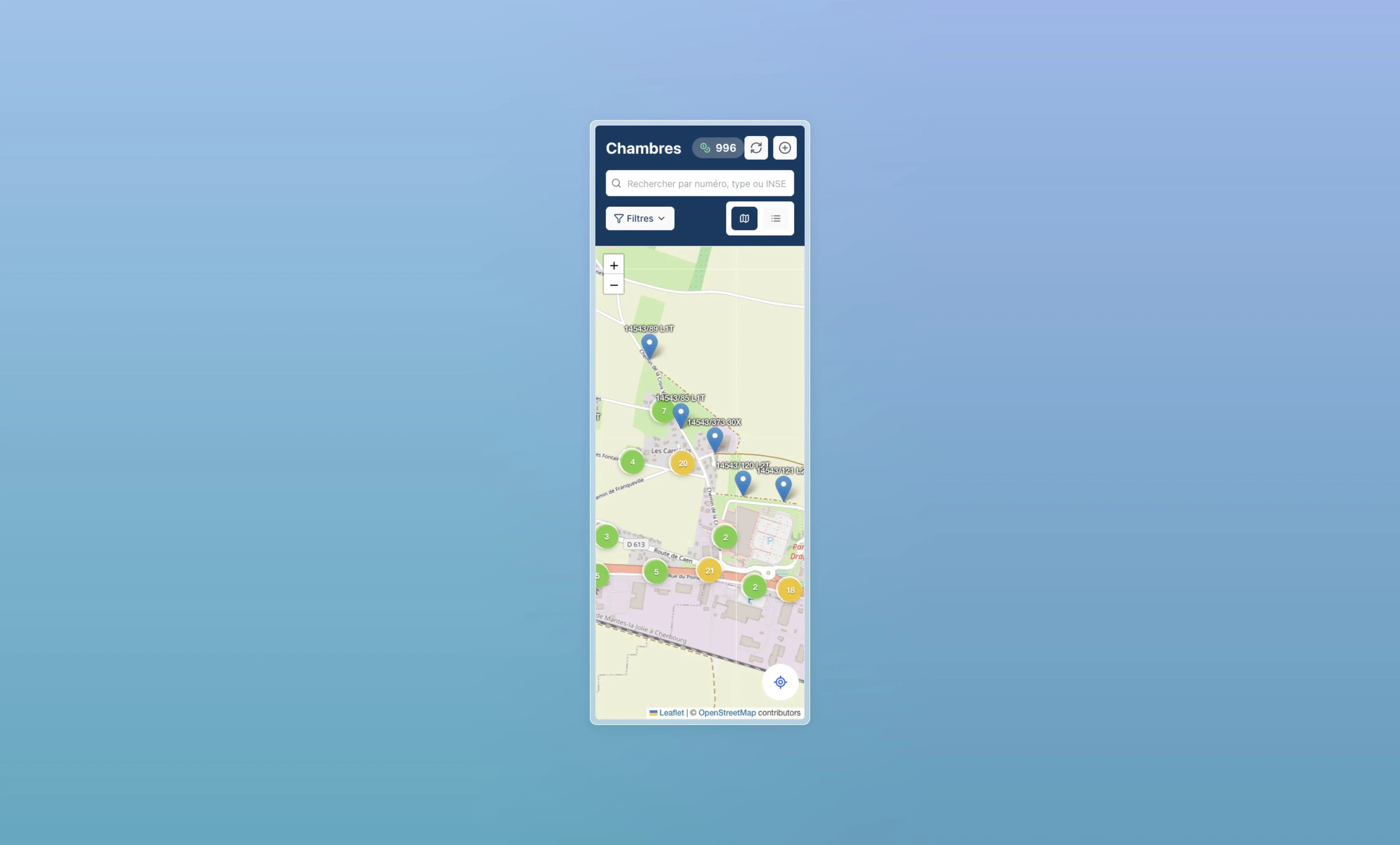
Mobile app - Home
Main mobile interface showing interactive room map with credit counter and search options
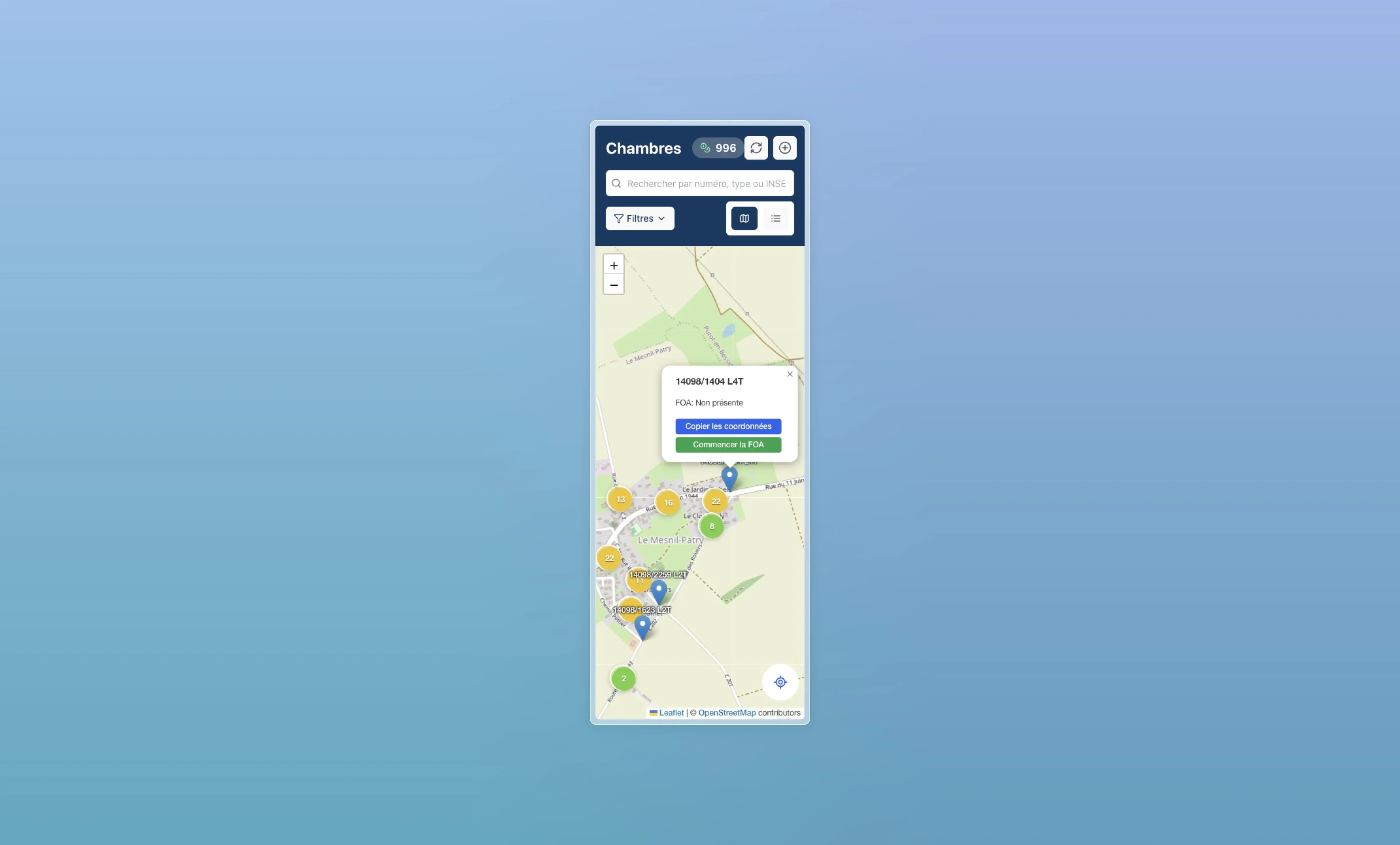
Mobile app - Room selection
Mobile map view with room selection popup allowing coordinate copying or FOA initiation
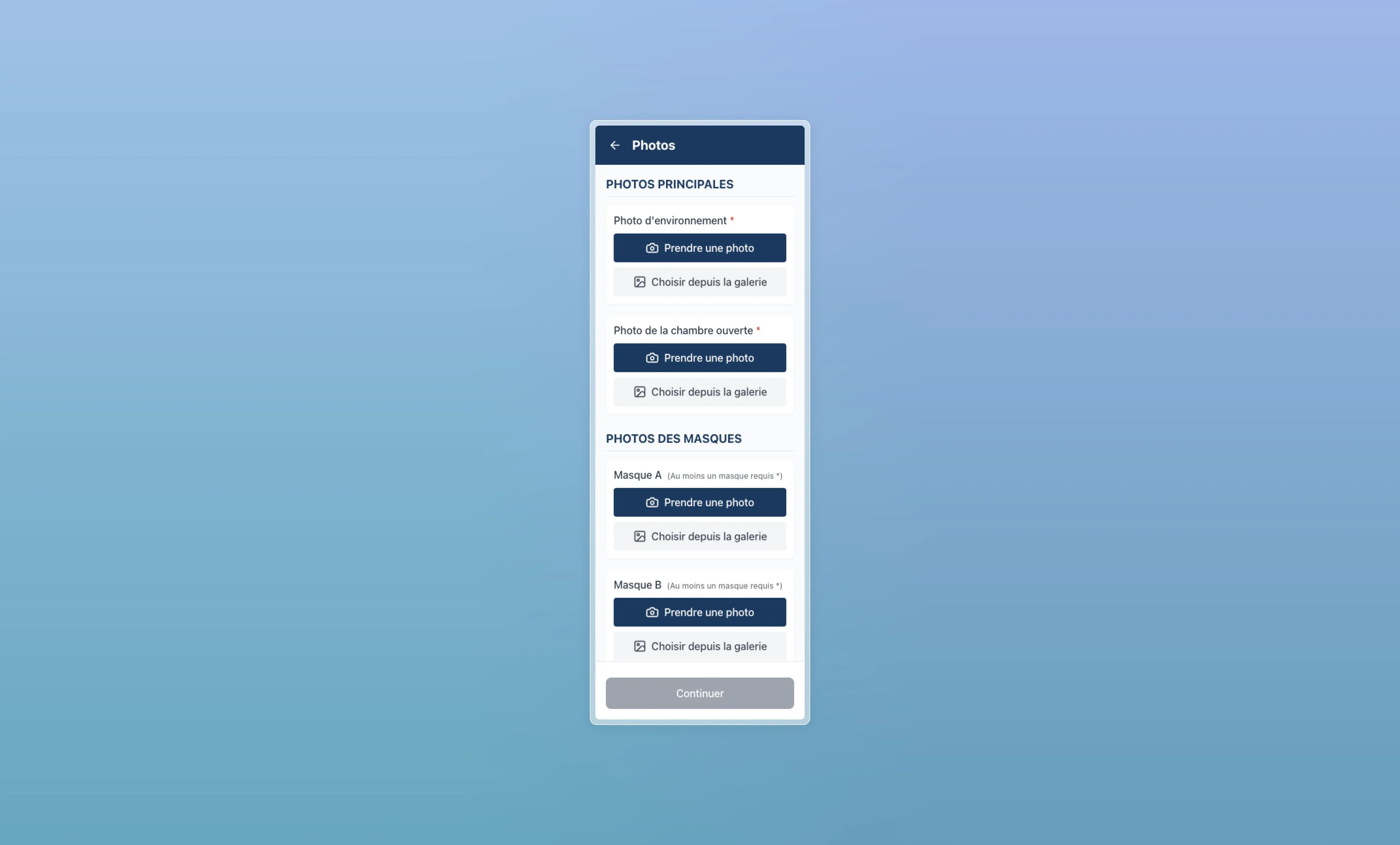
Mobile app - Photo capture
Photo capture module with dedicated sections for main photos (environment, open room) and mask A and B photos
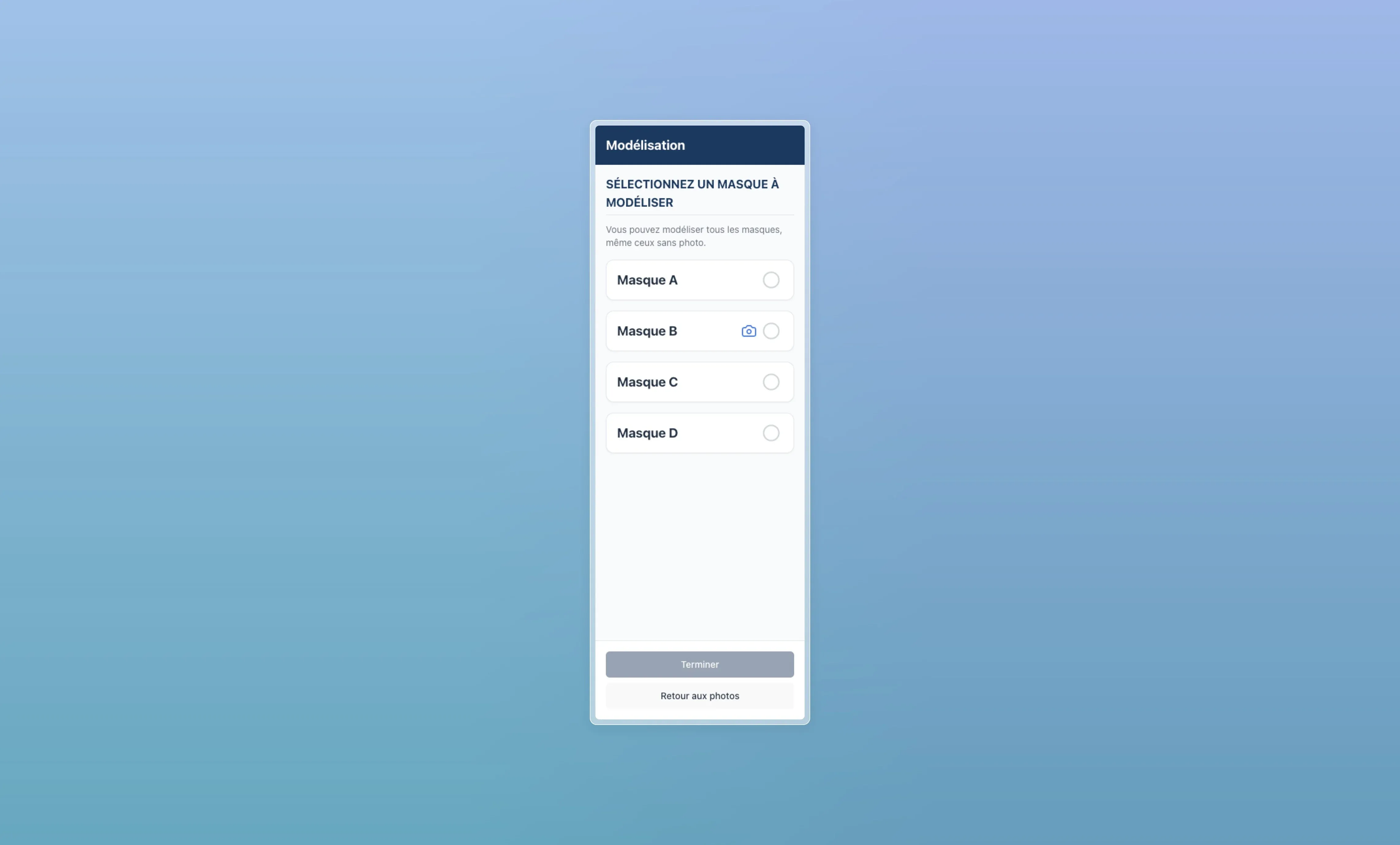
Mobile app - Mask selection
Selection interface allowing choice among available masks (A, B, C, D) for modeling, with indication of masks having photos
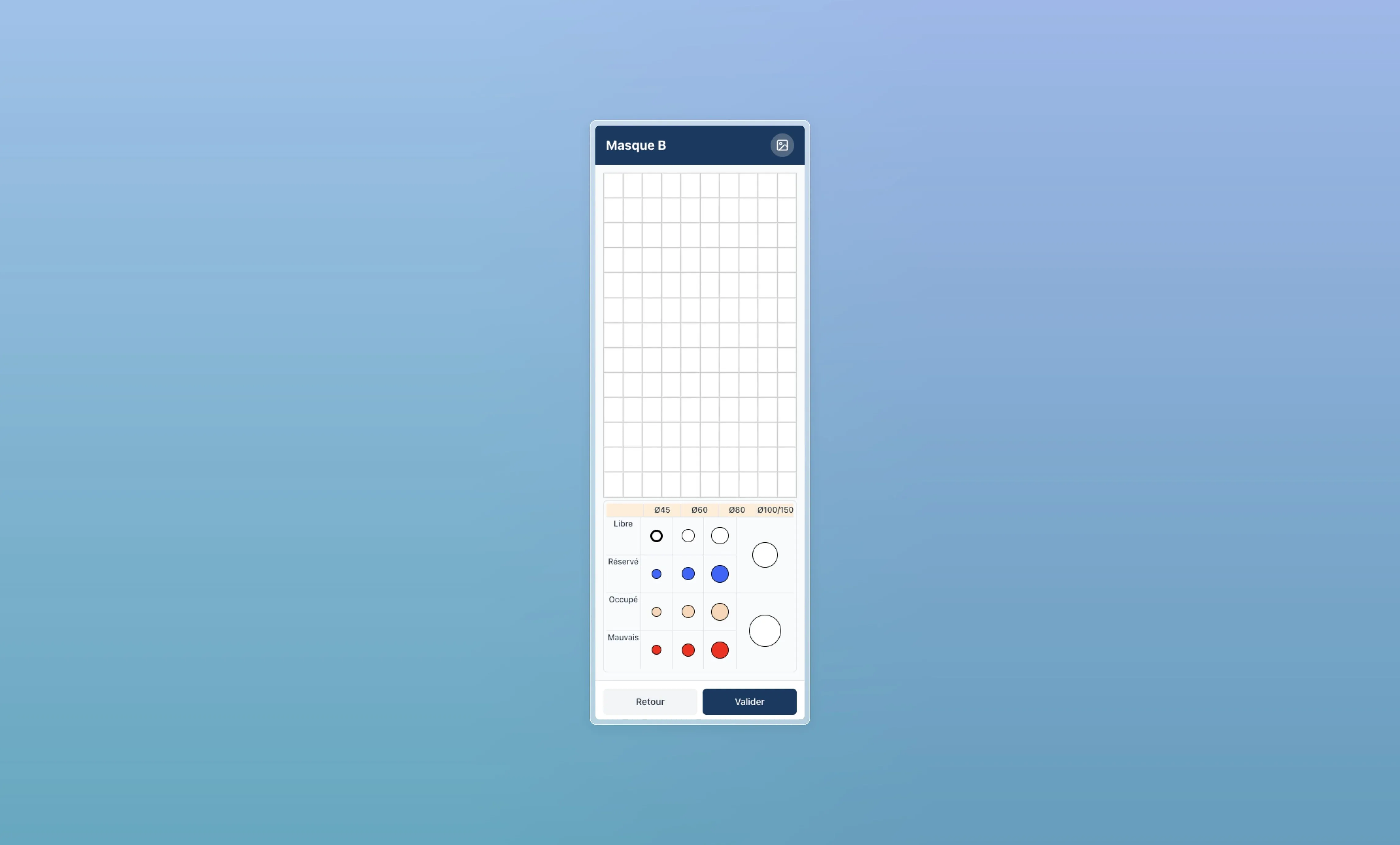
Mobile app - Empty mask modeling
Mask modeling tool with blank grid and complete legend of available occupation statuses
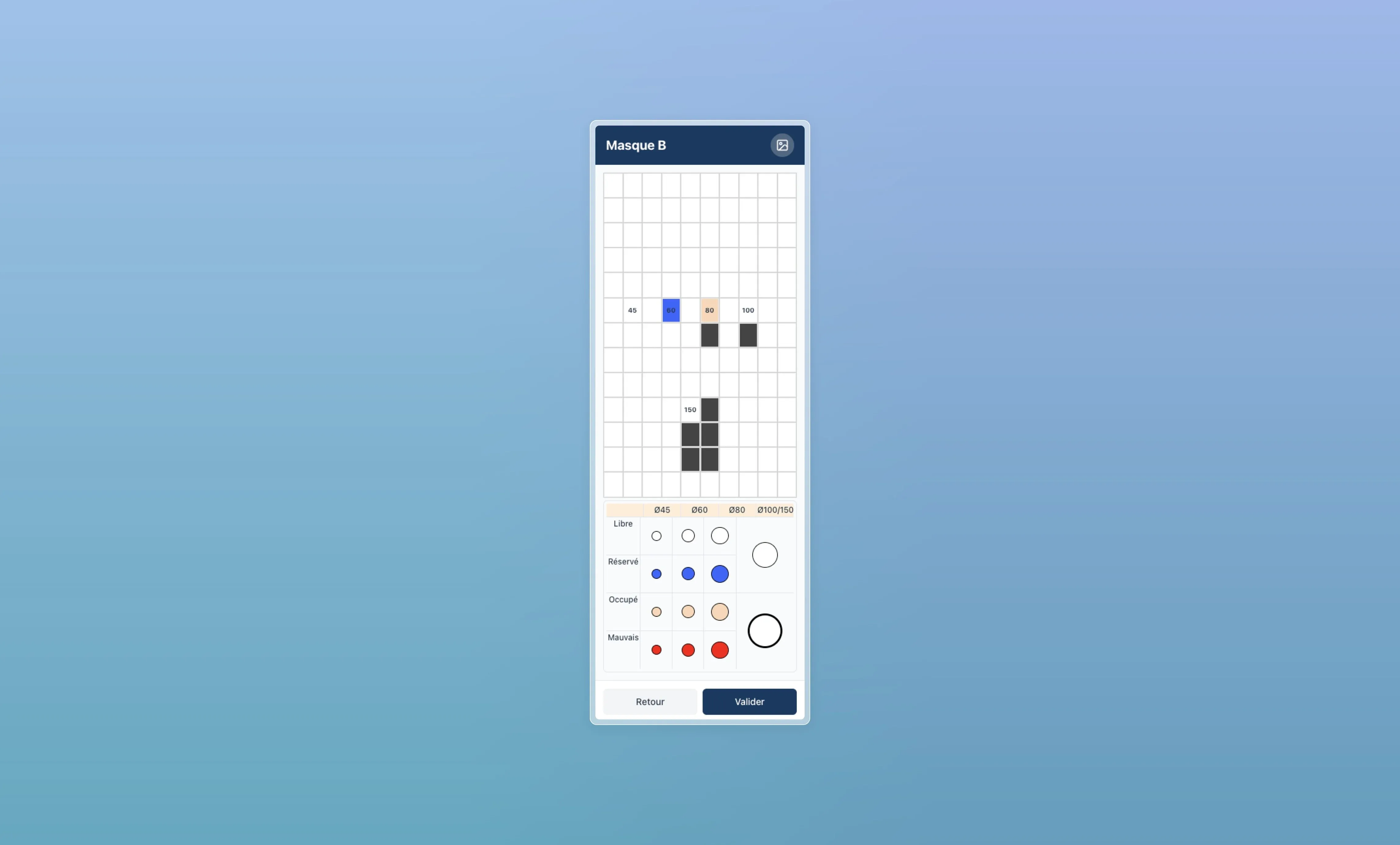
Mobile App - Mask Modeling with Example
Mobile mask creation interface with interactive grid, status legend (free, reserved, occupied, bad) and modeling examples
Challenges
One of the biggest challenges was managing the technical complexity of handling a large number of chambers (e.g., 20,000) on a map. This required significant optimization and careful design to ensure smooth performance, especially in areas with limited connectivity. Another major challenge was developing the platform without a direct client. Since it was a personal project originally my graduation project I had to imagine and build all the features based on what future clients might need. This meant anticipating requirements, creating value, and designing a product that could stand on its own in the market.
Learnings
This project allowed me to develop true autonomy, both on the technical and administrative levels. I had to handle the entire process, from designing the software architecture to managing organizational and planning aspects. The most important lesson, however, was learning to think creatively about solutions to problems that had not yet been solved. Without a direct client, I had to not only build a complete tool but also anticipate and create demand among future clients. This experience showed me the importance of positioning myself both as a technical architect and as a product strategist, in order to deliver a solution that is relevant and attractive to the market.